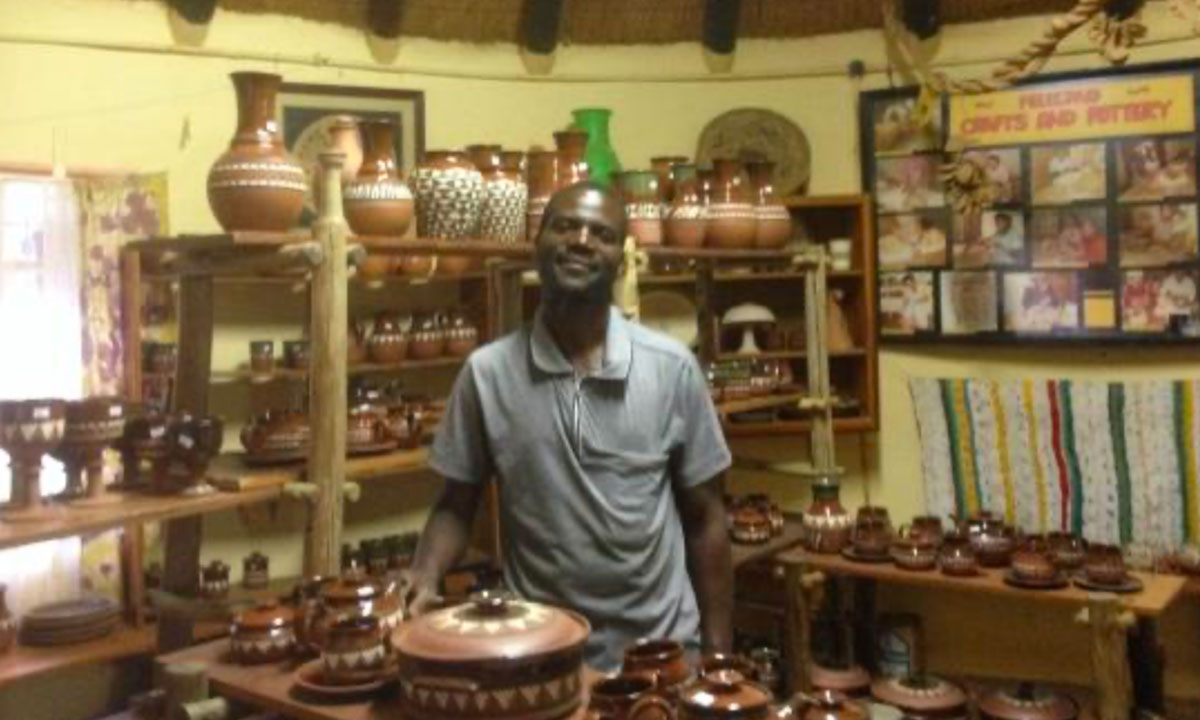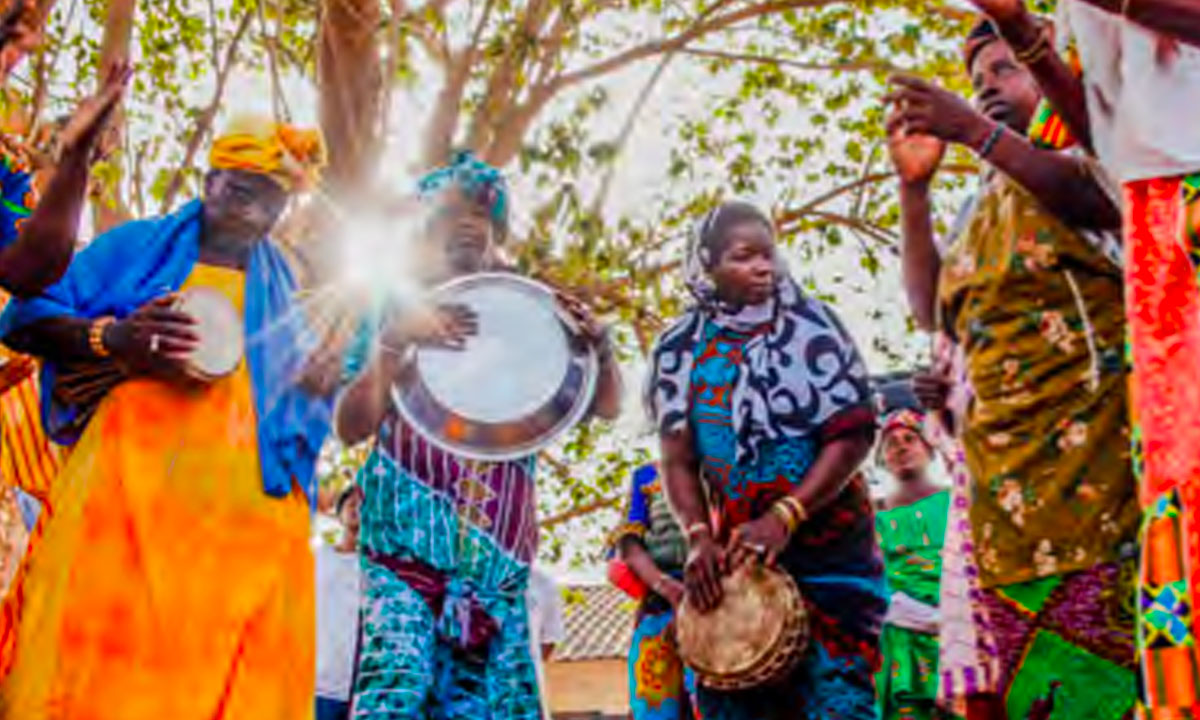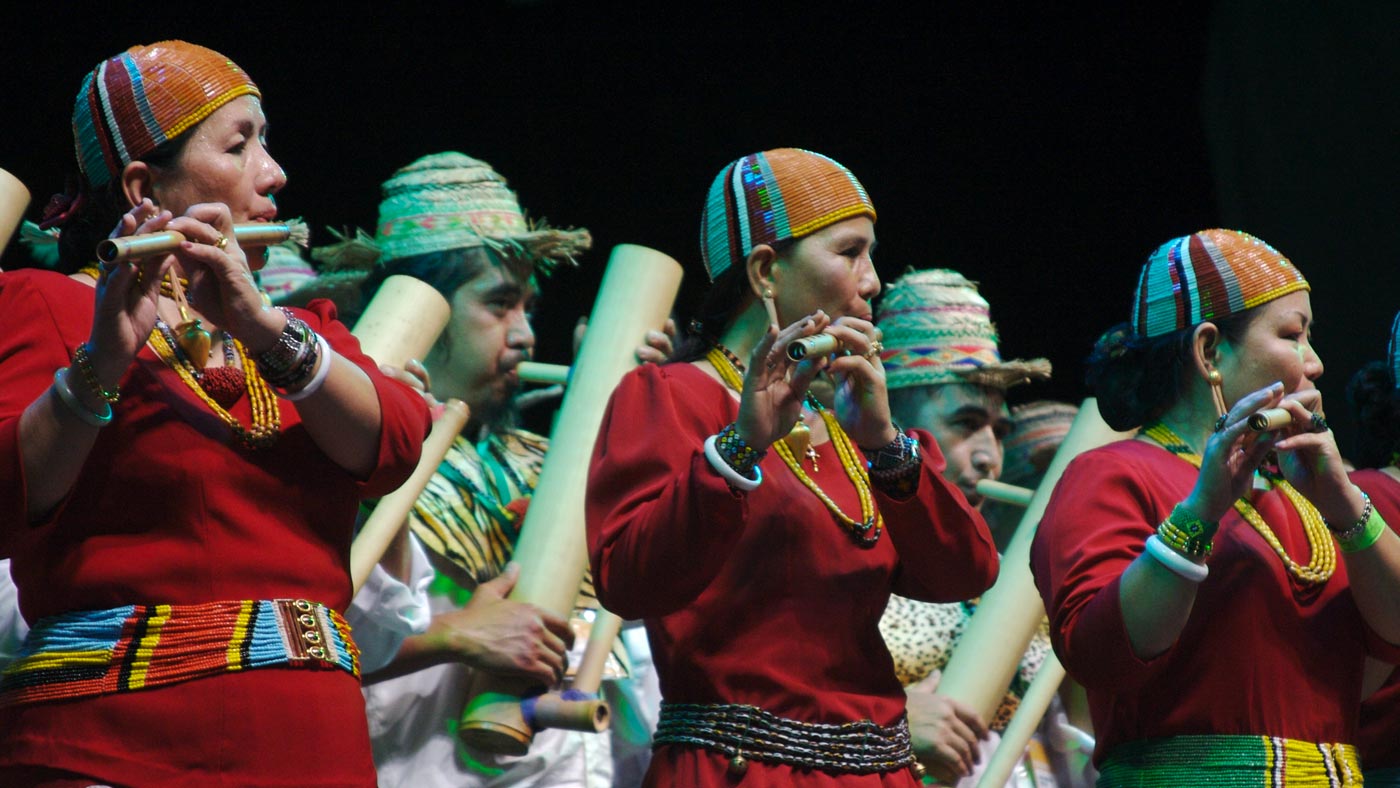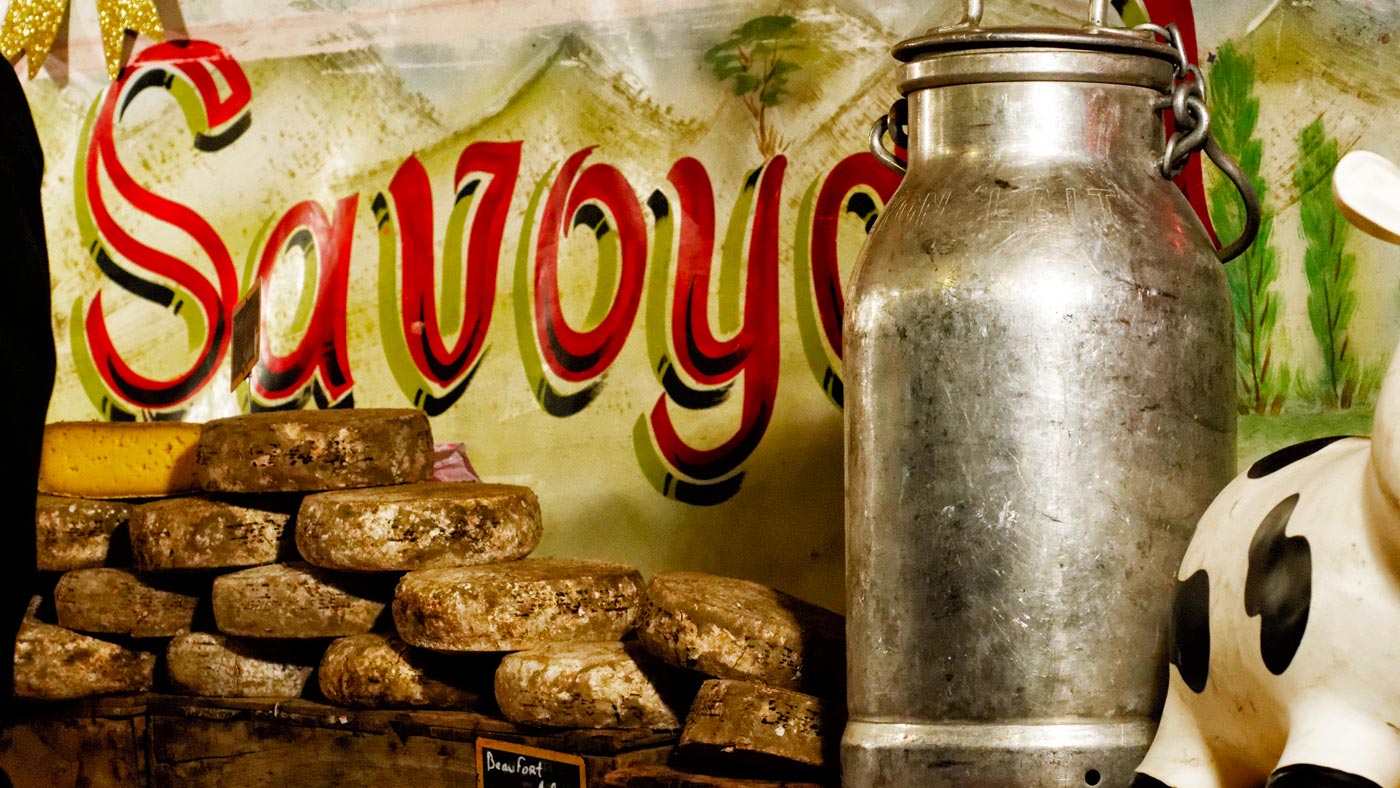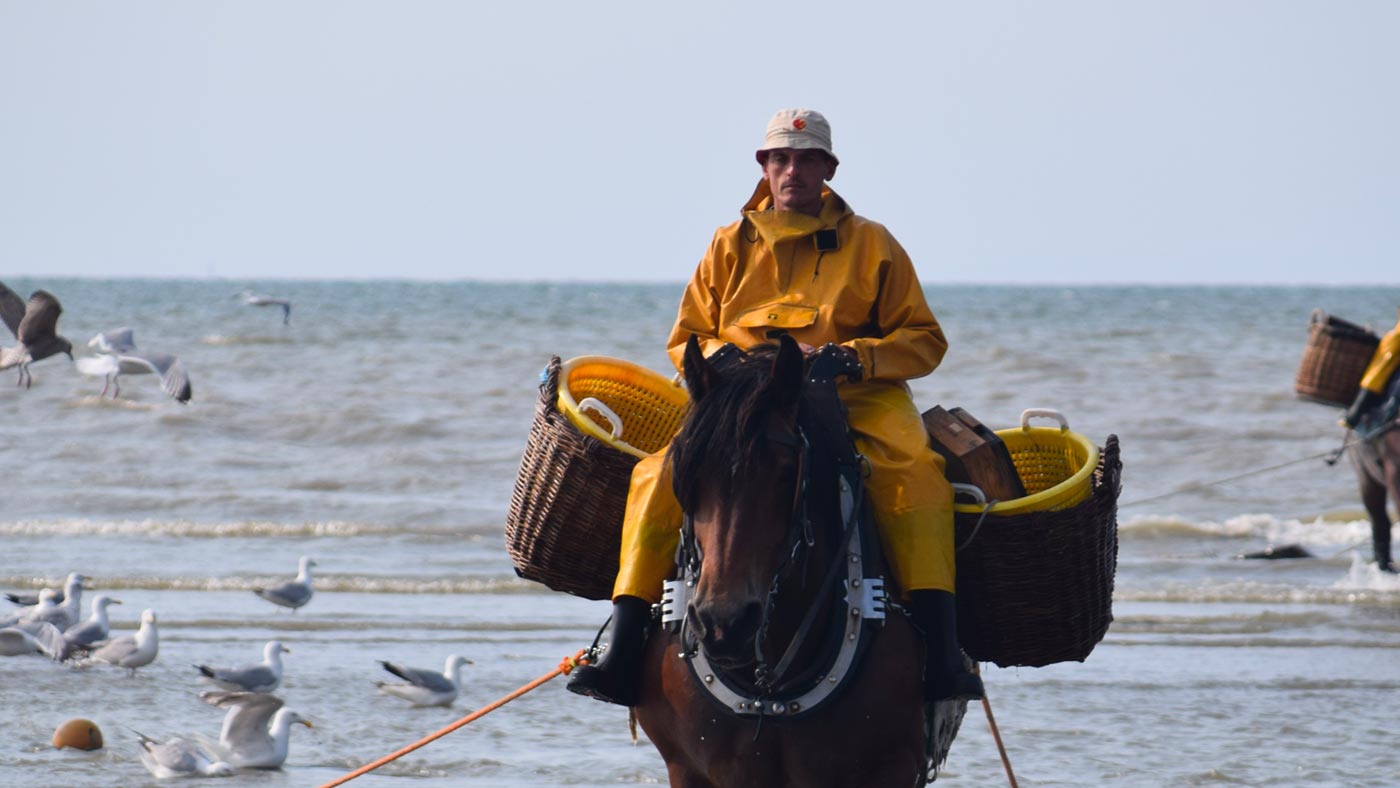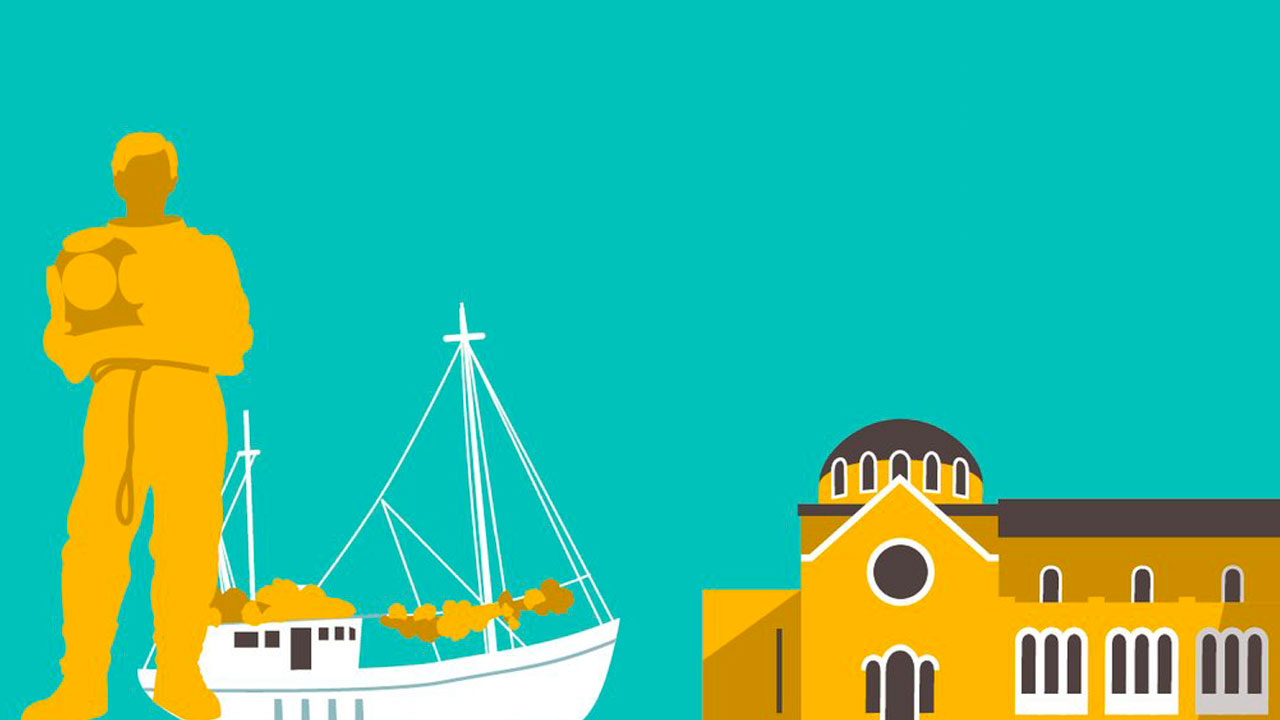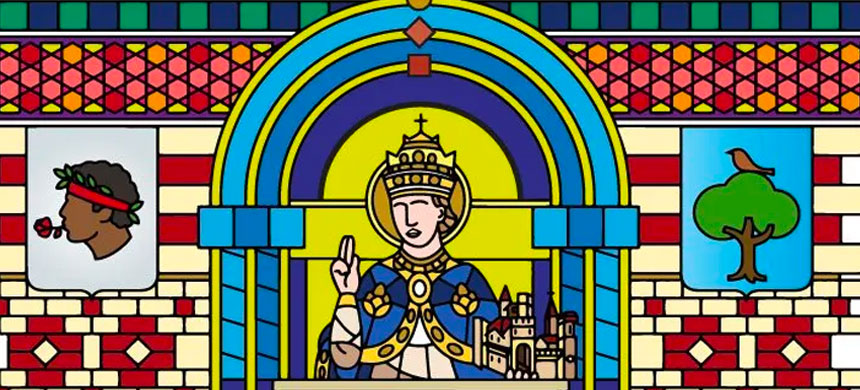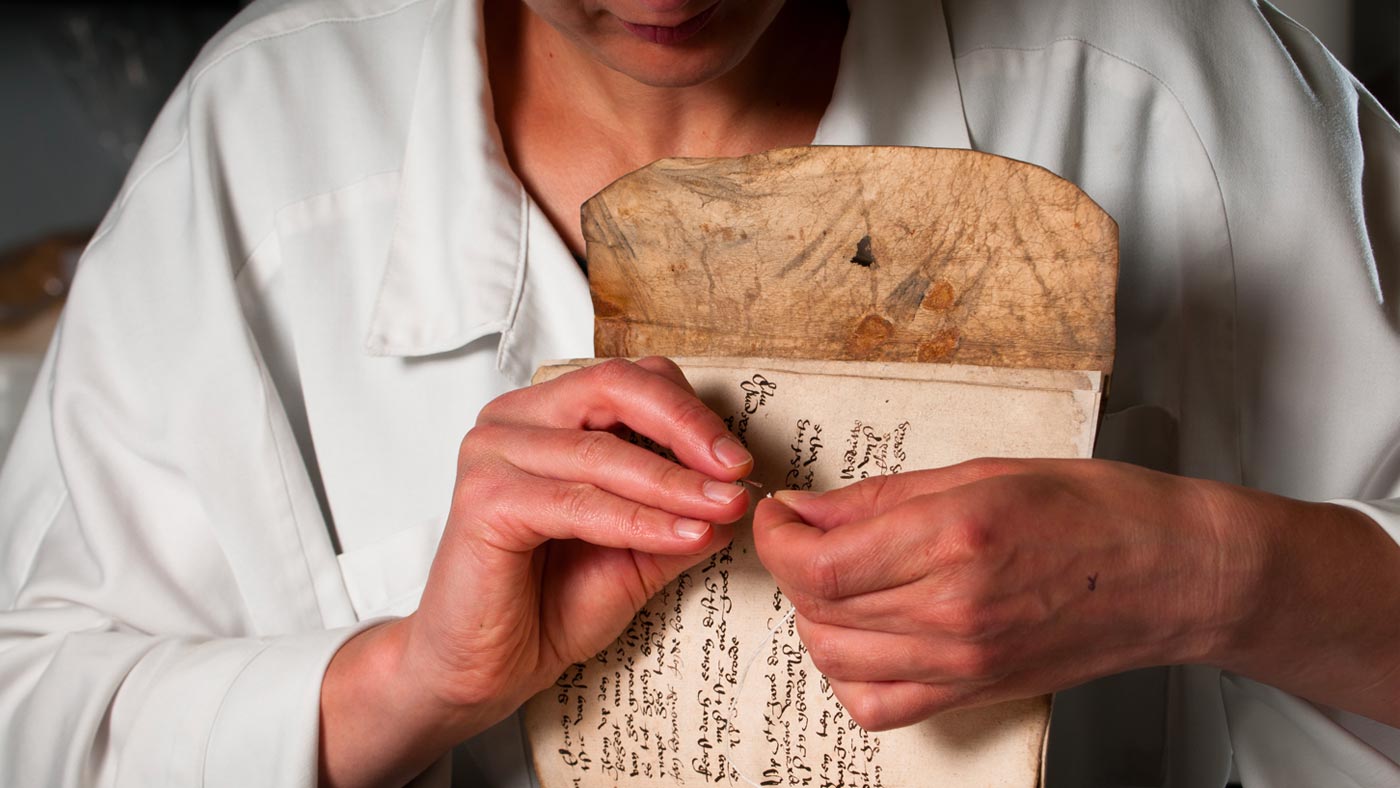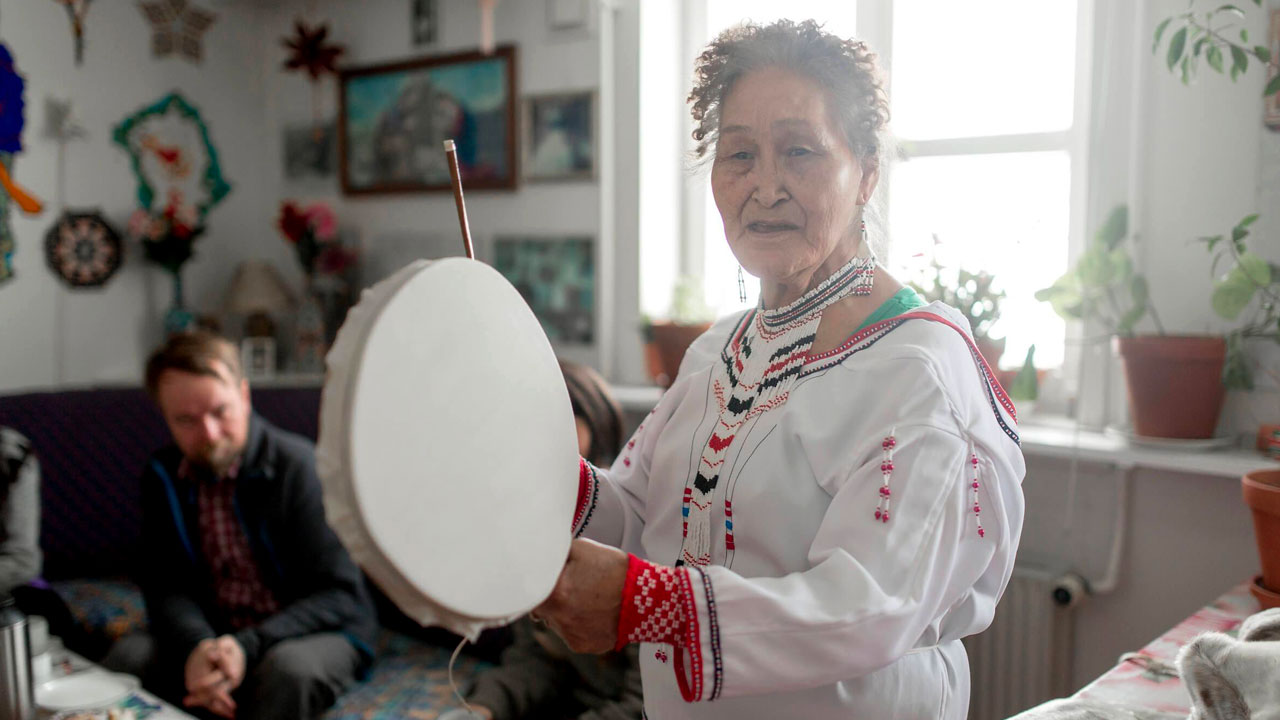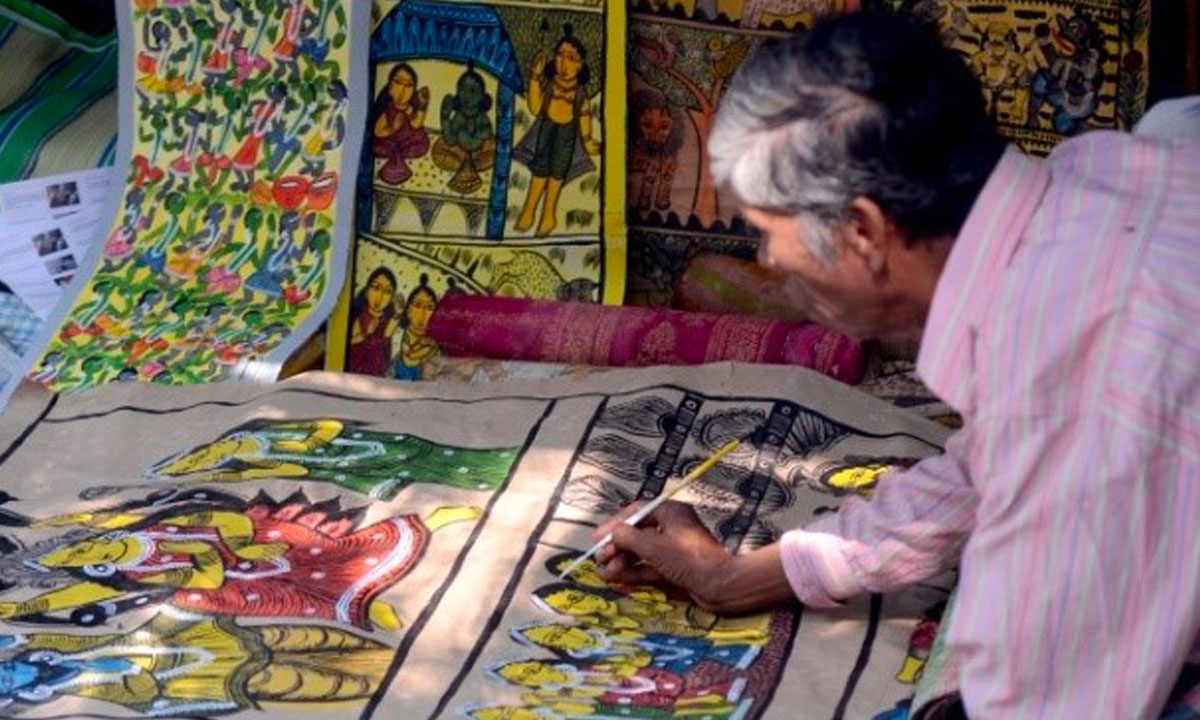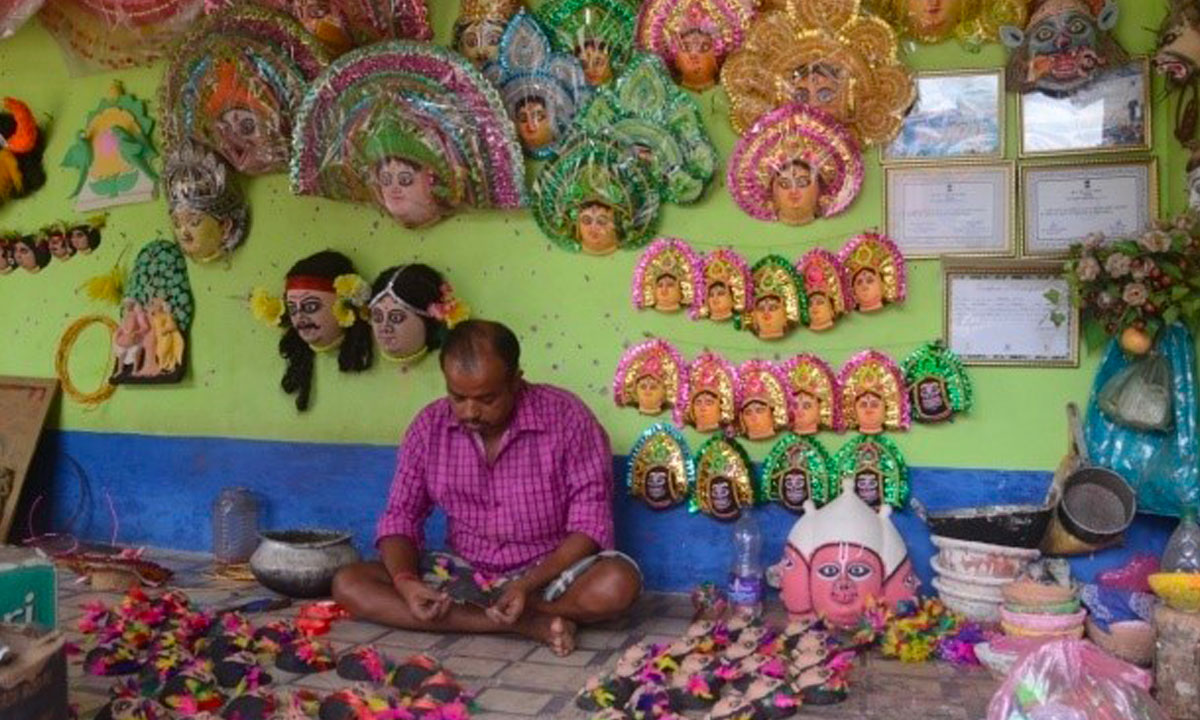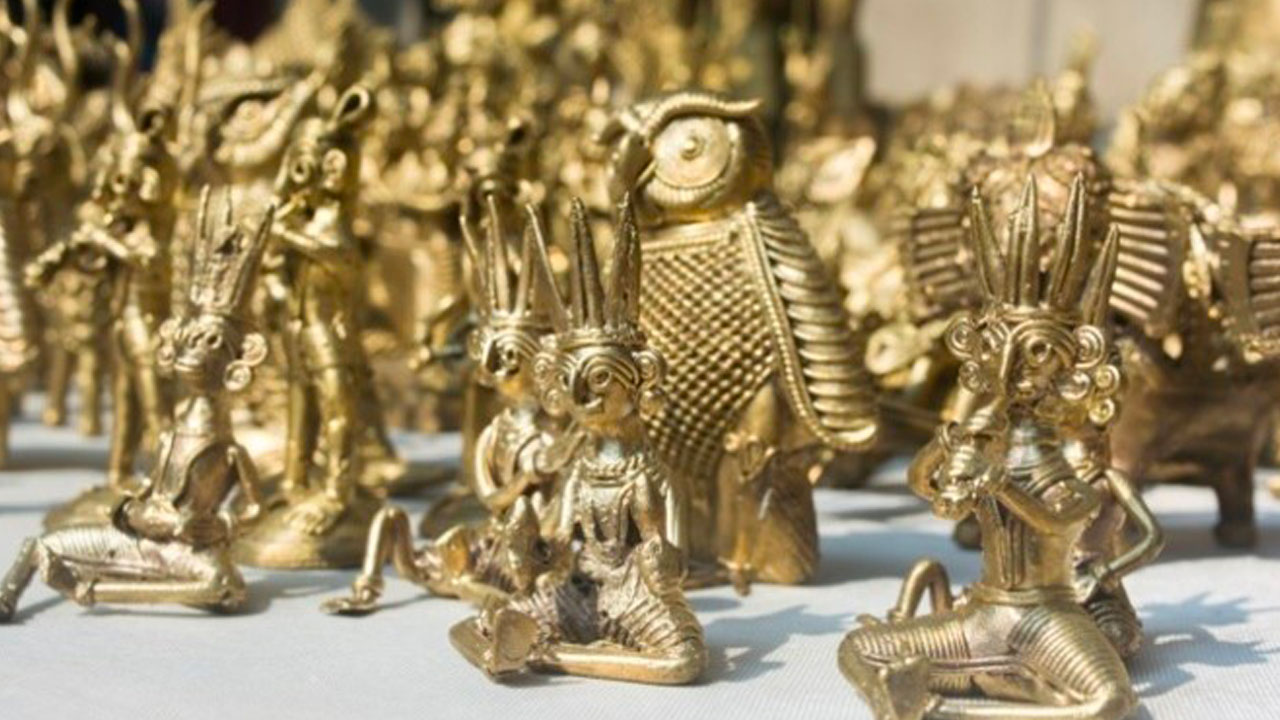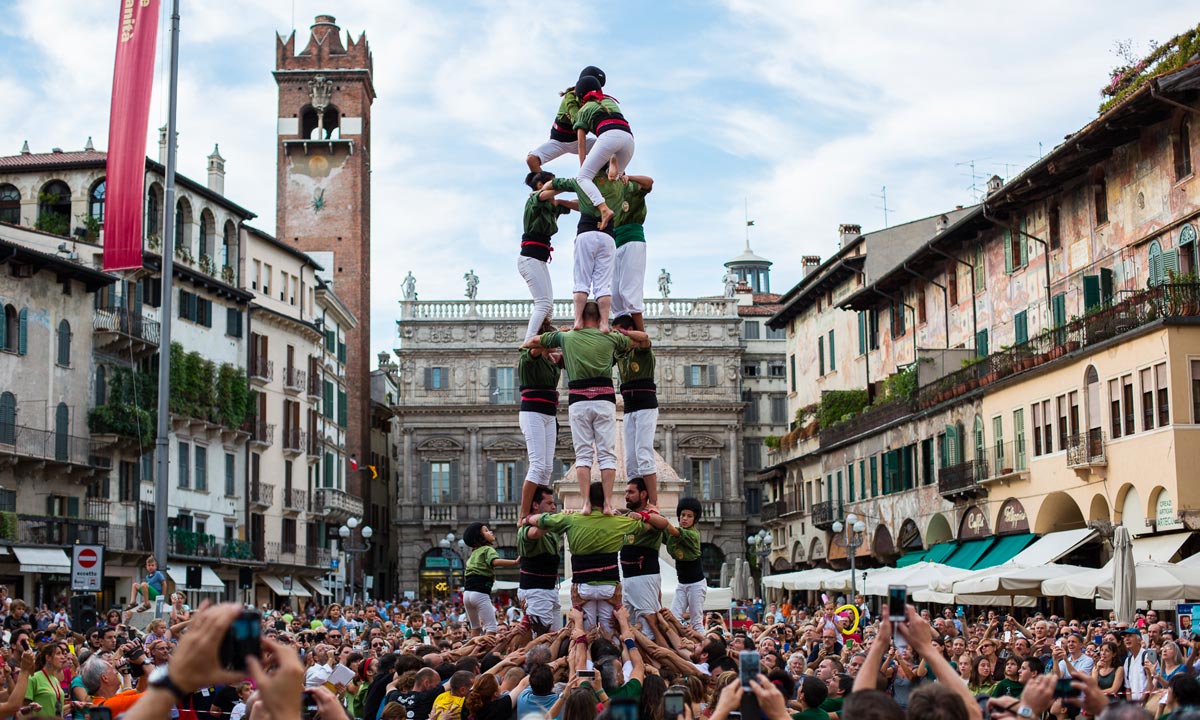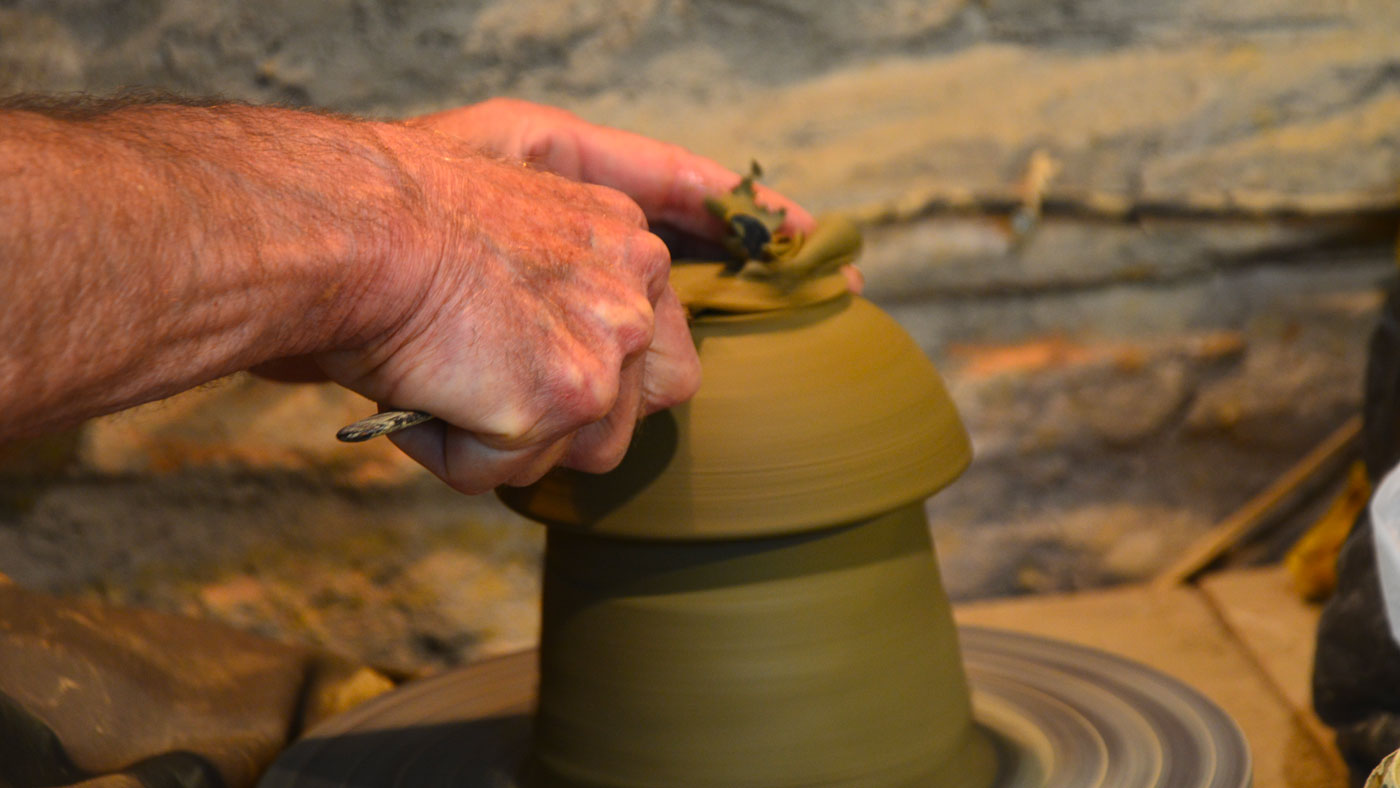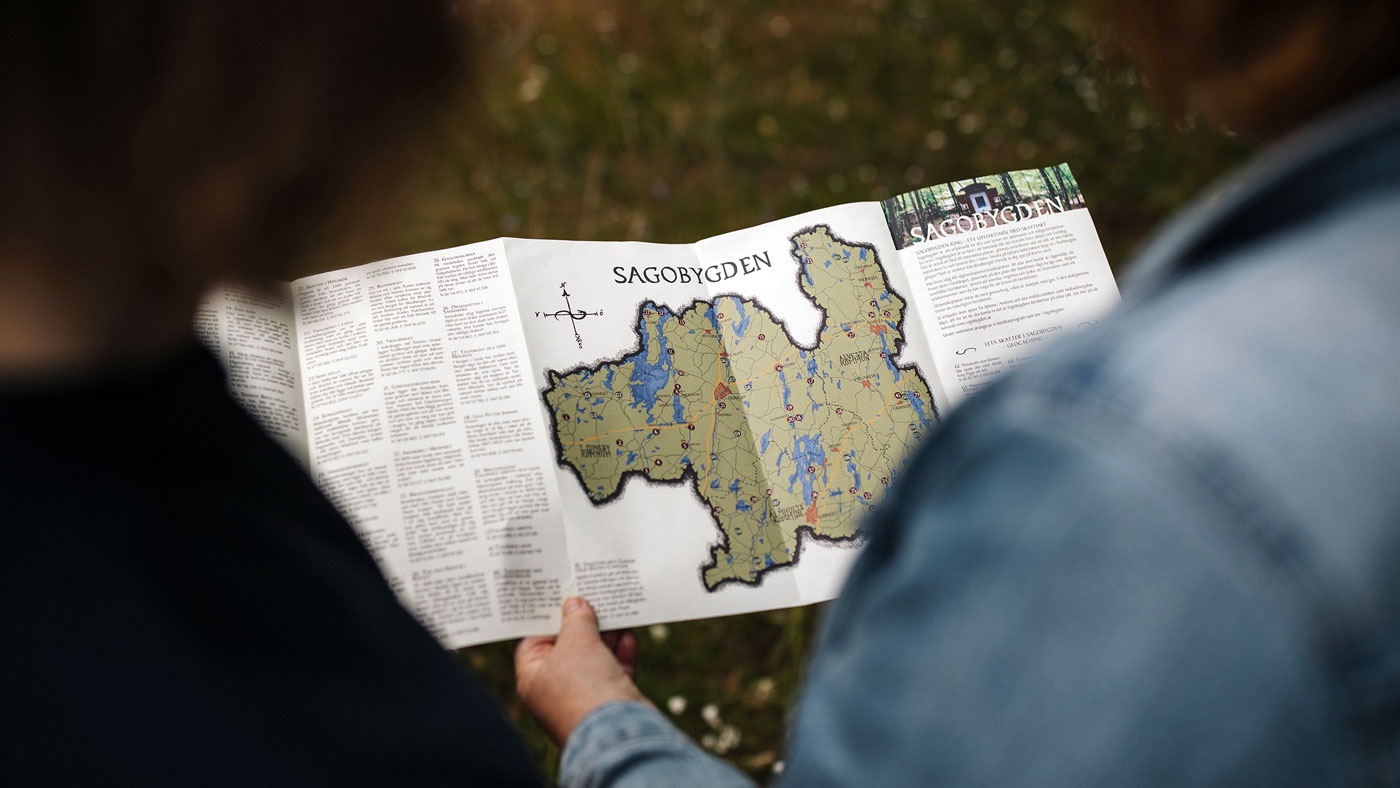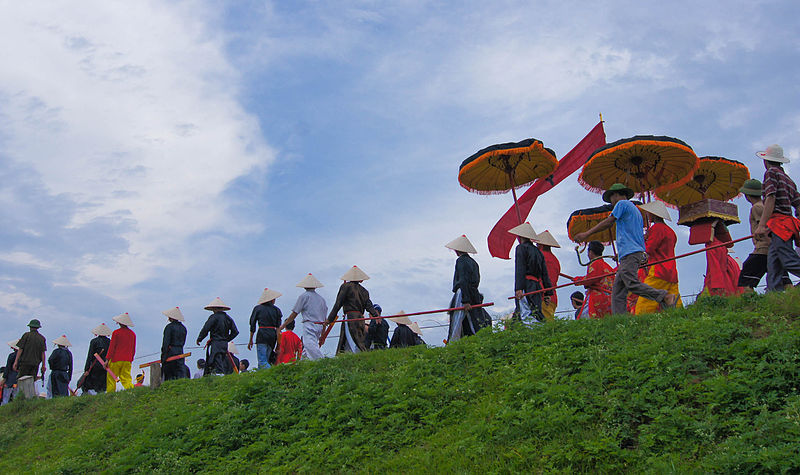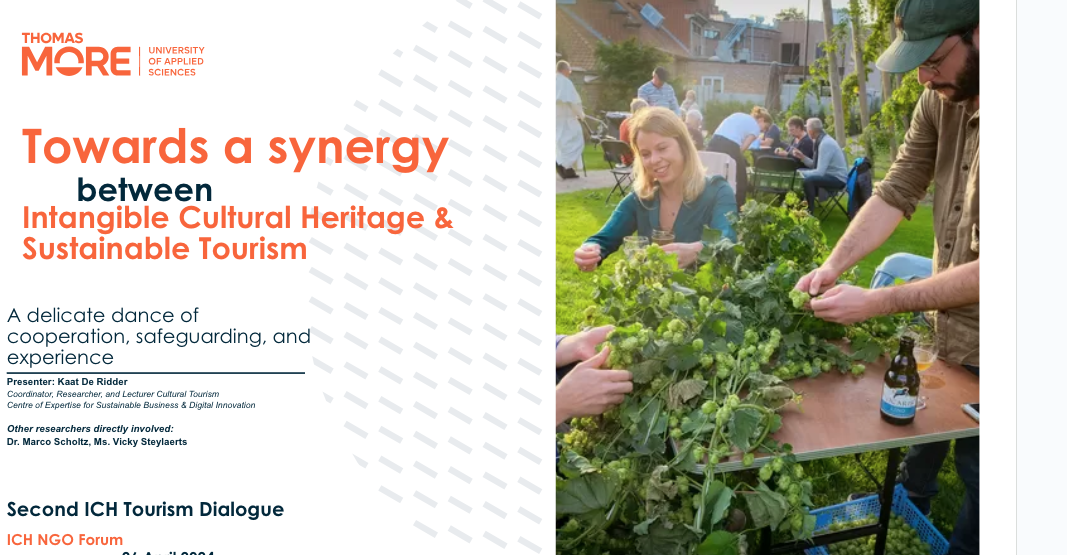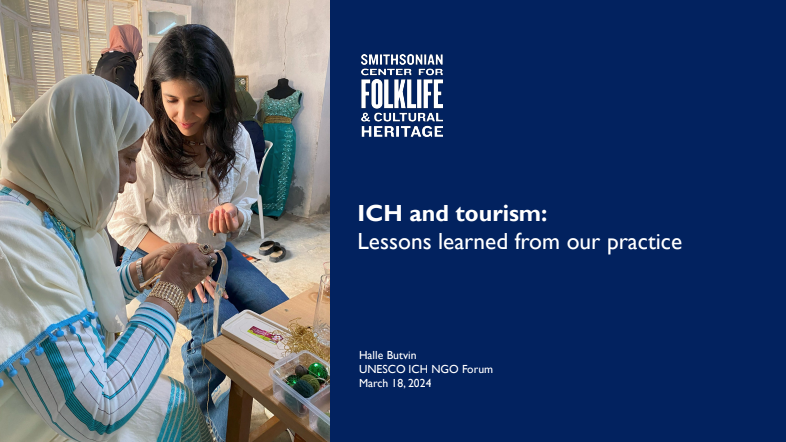This online space keeps evolving! Want to join?
1. WELCOME & INTRODUCTION
Welcome to this Web dossier
Tourism is a major means for presenting ICH which can help sustain it or endanger its community based practice. It is an important source of income and employment. When ICH gains wider attention through safeguarding efforts and UNESCO listings, tourism is often an inevitable result.
Through this web dossier you will find useful tools for developing ICH tourism projects, discussion of key issues, and examples of successful sustainable tourism initiatives.
Find out how communities have developed tourism centred on ICH that represents their culture on their own terms, things to avoid when presenting ICH to tourists, and how anyone working in the heritage sector can enable communities and groups to foster sustainable tourism. There are many useful resources here, including documents of international organisations concerned with ICH and tourism as well as links to publications and online sources on ICH and tourism.
Who is this web dossier for?
It is designed for anyone working in the heritage sector or the tourism field, NGOs and policy workers as well as communities or groups safeguarding their own living heritage.
You can enter this web dossier anywhere on this site. Use it to find successful examples of ICH tourism. It is a living document that will be revised over time – feel free to add examples of successful ICH tourism and share any comments at ichngoforum.research(at)gmail.com
Why focus on living heritage and sustainable tourism?
The relationship between safeguarding intangible cultural heritage (ICH) and tourism might not appear evident to many people, but it is undoubtedly present. Whenever the practice or performance of ICH becomes a destination for travellers who are outsiders to the community of practice, ICH tourism inevitably occurs. Living heritage elements such as foodways or gastronomy practices, handicrafts, arts, local traditions, music and many social practices are often part of what travellers want to discover, depending on their motivations, along with heritage sites and natural landscapes. Travellers everywhere are seeking experiences where they can directly engage with the host community by participating in their activities. They want to taste new foods in local places, respond actively to performances, stay in lodgings in residential neighbourhoods and meet ICH practitioners.
However, the relationship of ICH to tourism requires particular attention because of the potential benefits of tourism for safeguarding and sustaining cultural practices as well as the damaging consequences tourism can have for heritage practitioners and their communities. ICH tourism, when done in proper ways, fits well with the growing trends of experiential tourism, slow tourism and community-driven tourism. The interactions between ICH practitioners and tourism stakeholders can result in better ICH safeguarding, improved livelihoods for local communities, new incentives for heritage skills transmission and exciting new kinds of touristic activities, but it can also threaten the identity or cultural practices and expressions of bearer communities or groups.
Many factors must be considered in order to safeguard intangible heritage and offer sustainable, responsible and quality ICH tourism experiences. These include anticipated assessment of the potential impact of tourism on ICH; safeguarding ICH while allowing for adaptation to changing circumstances; visitor management to address over-tourism; promoting sustainable development including equitable livelihoods based on decent work; development of appropriate products and services linked to ICH; ensuring continuity of traditions; fostering local employment and ownership of tourist enterprises; or educating while entertaining (“edutainment”). Each and every one of these issues ought to be considered and be developed in order to respect the viability of the intangible heritage practices of communities and practitioners involved and give a thoughtful touristic activity.
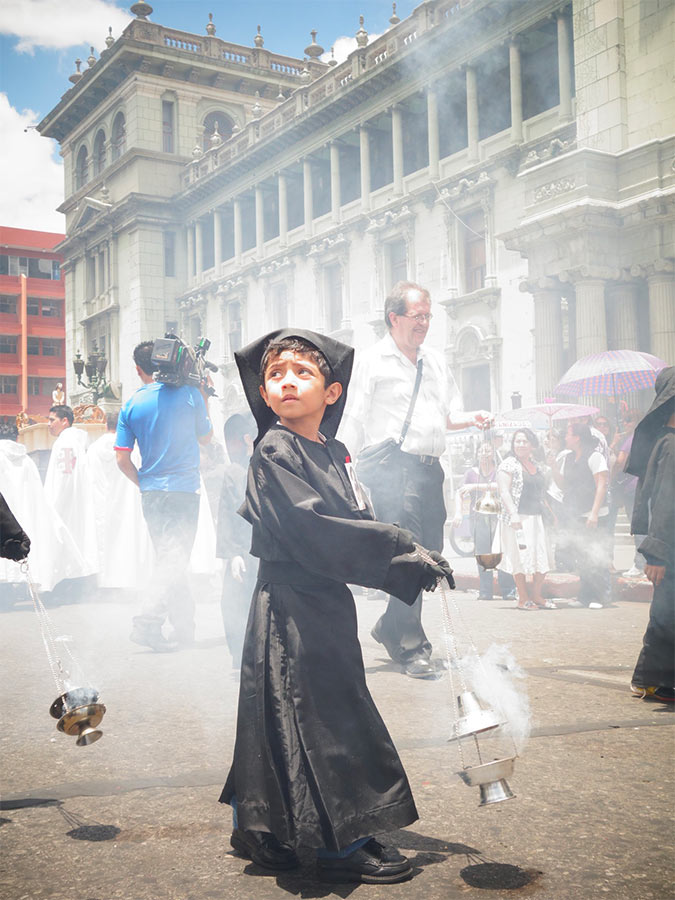
If not appropriately and respectfully managed in association with the communities impacted, tourism can lead to the degradation of ICH and of the sense of identity of the communities involved, it can provoke great damage to historical and cultural resources and can easily undermine its value(s).1 It can also affect the self-image of practitioners, communities and groups; cause abandonment of their practices and induce such phenomena as gentrification through displacing local businesses and affordable housing, amongst other dramatic consequences.
On the other hand, well-designed tourism activities can be beneficial to ICH practitioners and their local community or groups through increasing the economic, social and cultural value of ICH.2 Musicians and dancers perform for new and larger audiences; young people are trained in traditional building practices, crafts and performing arts; local and creative businesses emerge and prosper; and ICH previously ignored or neglected gains new respect and recognition thanks to the interest of tourists.
The UNESCO 2003 Convention for the Safeguarding of the Intangible Cultural Heritage recognized the need for an official framework to safeguard ICH and aims to give guidelines on this topic. Its Operational Directives (paragraph 187) provided recommendations regarding the safeguarding of ICH in tourism activities. They emphasise the need for tourism activities to respect the safeguarding of ICH and the wishes and needs of host communities. They also balance the interests of tourism businesses, governments and cultural practitioners to ensure the viability, cultural meanings, social functions and sustainability of ICH and promote the adoption of legal, technical, administrative and financial measures, including intellectual property rights, privacy rights and any other appropriate forms of legal protection, to ensure safeguarding. UNESCO also established Ethical Principles which apply to all dimensions of ICH, including tourism development.3 And UNESCO’s Overall Results Framework for ICH links “inclusive economic development”, tourism and the Sustainable Development Goals.4
By diminishing, mitigating and avoiding negative impacts of tourism on its elements, sustainable tourism can bring great opportunities for safeguarding ICH. It must consider the current and future impacts of tourism on ICH, including economic, social and environmental dimensions.5
How can this be done in such a way as to maximise sustainable development benefits to bearer communities, as well as to promote ICH safeguarding?
Sustainable tourism should be developed in a very thoughtful way, in order to respect the living heritage and its practitioners, by adopting strategies aiming to diminish and mitigate the negative impact of tourism without missing out on the benefits. These strategies may include the heritage-sensitive use of intellectual property rights and marketing, as well as digitization strategies. Both tourism and heritage stakeholders should accept that tourism is everywhere, and can therefore affect ICH, and put (more) effort towards the significant redistribution of tourism related revenues to bearer communities. Locally owned tourism businesses should be encouraged and practitioners need to directly benefit economically. There is an urgent need for innovative ideas in line with sustainable development, and approaches that reconcile tourism and safeguarding of ICH. Ethical issues, especially in connection with bearer communities involved, should be addressed in the creation of ethical codes for ICH tourism. It should be a principal focus of our work in the future.
International agencies are more and more aware of bad examples adopted in the past and feel the necessity of giving proper care to ICH and its practitioners.6 In 2015, participants of the World Summit on Sustainable Tourism helped to write The World Charter for Sustainable Tourism +20. This charter demonstrates awareness of this strong link, which is why it claims that “as one of the world’s most powerful economic and social forces, tourism can and must strengthen the decisive role of heritage, both tangible and intangible, in contemporary society, consolidating cultural identity and diversity as key points of reference for the development of many destinations”.7
This toolkit aims to help address these challenges, by offering tools, resources and sharing experiences which may enrich and inspire your future initiatives at the intersection of ICH and Tourism. It provides pathways for ICH practitioners to enable communities to represent their ICH on their own terms to tourists, selectively providing access when appropriate.
- 1 UNESCO Office Bangkok and Regional Bureau for Education in Asia and the Pacific, Establishment Initiative for the Intangible Heritage Centre for Asia-Pacific (2008). Safeguarding Intangible Heritage and Sustainable Cultural Tourism: Opportunities and Challenges. UNESCO-EIIHCAP Regional Meeting, 4. Available at: https://unesdoc.unesco.org/ark:/48223/pf0000178732
- 2 Kim, S., Whitford, M. and Arcodia, C. (2019). ‘Development of intangible cultural heritage as a sustainable tourism resource: the intangible cultural heritage practitioners’ perspectives’, Journal of Heritage Tourism, (14:5-6, 430), pp. 424-425. Available at: https://doi.org/10.1080/1743873X.2018.1561703
- 3 UNESCO (2018). Operational Directives. Available at https://ich.unesco.org/en/directives
- 4 UNESCO (2018). ‘Guidance Note for Core Indicator 13’, Overall Results Framework. Available at https://ich.unesco.org/en/overall-results-framework-00984#guidance-notes-by-indicators
- 5 United Nations World Tourism Organization. EU guidebook on sustainable tourism for development. Available at https://www.unwto.org/fr/EU-guidebook-on-sustainable-tourism-for-development
- 6 Zhu, Y. and Salazar, N. B. (2015). ‘Heritage and Tourism’, In Meskell, L. (ed.) Global Heritage: A Reader. John Wiley & Sons, Inc 253-254. Available at: https://www.academia.edu/12739602/Heritage_and_Tourism
- 7 World Conference on Sustainable Tourism (2015). World Charter for Sustainable Tourism +20. 19. Available at: http://www.institutoturismoresponsable.com/events/sustainabletourismcharter2015/wp-content/uploads/2016/04/ST-20CharterMR.pdf
2. BASIC CONCEPTS
What is ICH?
“Today, even in a world of mass communication and global cultural flows, many forms of living heritage are thriving, in every country and every corner of the world”8
The 2003 UNESCO Convention for the Safeguarding of Intangible Cultural Heritage (ICH) set in motion a growing global movement to sustain cultural practices. It extended efforts to safeguard heritage beyond conservation and protection of physical objects and monuments, defining ICH as: “the practices, representations, expressions, knowledge, skills – as well as the instruments, objects, artefacts and cultural spaces associated therewith – that communities, groups and, in some cases, individuals, recognize as a part of their cultural heritage”.9
ICH is transmitted over time and between generations. While it is rooted in the past it is also dynamic, modified, transformed or recreated by communities or groups in relation to their cultural and natural environment.10 ICH is not stagnant, it is a living heritage evolving with people and time, adapting to new circumstances, changing through the creativity of its practitioners. It cannot be frozen in a specific state or period of time.
ICH is found in every human community and group. The 2003 Convention lists some of the domains in which ICH can be manifested as following:11
- oral traditions and expressions, including language as a vehicle of the intangible cultural heritage;
- performing arts;
- social practices, rituals and festive events;
- knowledge and practices concerning nature and the universe;
- traditional craftsmanship.
In this toolkit, the expression “living heritage” is used as synonymous with intangible cultural heritage.
- 8 UNESCO Office Bangkok and Regional Bureau for Education in Asia and the Pacific, Establishment Initiative for the Intangible Heritage Centre for Asia-Pacific (2008). Safeguarding Intangible Heritage and Sustainable Cultural Tourism: Opportunities and Challenges, UNESCO-EIIHCAP Regional Meeting. 22. Available at: https://unesdoc.unesco.org/ark:/48223/pf0000178732
- 9 UNESCO (2003). UNESCO Convention for the Safeguarding of Intangible Cultural Heritage. Available at: https://ich.unesco.org/en/convention
- 10 UNESCO (2011). MEDIA KIT – Sixth Session of the Intergovernmental Committee for the Safeguarding of the Intangible Cultural Heritage (6.COM), 4. Available at: https://ich.unesco.org/doc.src.15164-EN.pdf
- 11 UNESCO (2003). UNESCO Convention for the Safeguarding of Intangible Cultural Heritage. 2-3. Available at:https://ich.unesco.org/en/convention
What is meant by ‘safeguarding’?
Since the coming into force of the UNESCO 2003 Convention for the Safeguarding of Intangible Cultural Heritage, there has been a growing international interest in recognizing, safeguarding and sustaining living heritage for the benefit of current and future generations.
The UNESCO 2003 Convention defines ‘safeguarding’ as actions taken to ensure the viability of ICH. According to the Convention, it can be done via “identification, documentation, research, preservation, protection, promotion, enhancement, transmission” and “through formal and non-formal education, as well as the revitalization of the various aspects of such heritage”.12
Since it is a living heritage, dynamic and constantly changing, ICH should not be safeguarded in a way that freezes or fixes it in one form or another. It is important for ICH that it evolves through adaptations and creativity in response to changing contexts or new circumstances, while remaining within the core values which the community involved attaches to the cultural practice. Safeguarding means transmitting not only the knowledge and skills of the bearers but also functions, values and significance of the living heritage. Safeguarding measures should reinforce this ‘continuous change’ which defines ICH and allow its transmission to future generations.
The UNESCO 2003 Convention, which has been ratified by 180 countries, emphasises the central role of practitioners and their communities, in recognizing the cultural practices they cherish as part of their cultural heritage and in safeguarding it on their own terms.13 Safeguarding measures should emerge, whenever possible, from these bearer communities rather than from a third party that is not committed to the cultural practice and may distort its value. In effect, according to the Convention, any safeguarding measure should be approved by the community or group of people involved.14
Thus, safeguarding ICH is done primarily by the communities, groups and individuals concerned, by those who practise and transmit the heritage. In addition, these community actors can be supported by collaborations among stakeholders that include for example government agencies, NGOs, and cultural specialists.
- 12 UNESCO (2003). UNESCO Convention for the Safeguarding of Intangible Cultural Heritage, 6. Available at: https://ich.unesco.org/en/convention
- 13The UNESCO 2003 Convention text uses the encompassing and open concept of ‘communities, groups and -in some cases- individuals’. In recent years you can also find this concept being abbreviated or referred to in the working field of ICH as ‘CGI’.
- 14UNESCO. Safeguarding without freezing. Available at: https://ich.unesco.org/en/safeguarding-00012
What is tourism?
People have travelled since time immemorial, but tourism -travelling for leisure- is a more recent phenomenon. It was born out of modern social trends in 17th century western Europe, although it can be traced back to Classical antiquity and is related to pilgrimage practices in East Asia that began centuries earlier. The World Tourism Organization -UNWTO- defines tourism as “the activities of persons travelling to and staying in places outside their usual environment for not more than one consecutive year for leisure, business and other purposes.” (UNWTO, 2010). Although there’s not a widely accepted definition, tourism has grown into an industry that includes provision of accommodation, transport, activities, services, food and entertainment as well as education for tourism professionals.
Tourism can take multiple forms
Tourism can take many forms. It can, among others, be heritage centred, agricultural, educational, maritime, sustainable, medical, as well as related to health or wellness, to adventure, adoption from another country of birth, to indigenous life, to sport or to gastronomy, and, as “dark tourism”, to places of death and natural disaster, slum tourism to poor communities or exploitative sex tourism amongst other types of tourism.
According to the UNWTO -The World Tourism Organization- a tourism product is a combination of tangible and intangible aspects; it can involve natural and cultural resources as well as attractions, facilities, services and activities related to a specific interest.15 In 2019, the tourism industry constituted 10.3% and contributed US$8.9 trillion to the world gross domestic product. It represents 330 million jobs around the globe (one in ten jobs) and it is still growing.16
Tourism is one of the most dynamic economic activities in the world, even though the consumption modes have changed in recent years.17 The massive econòmic impact of the COVID 19 epidemic upon tourism worldwide dramatised its significance as an econòmic force.
Depending on their motivations, tourists wish to discover a country and its heritage sites but also its culture, gastronomy, local and social practices and traditions, handicrafts, arts or music. All of these, and many more, are illustrations of what intangible heritage can represent. Many tourists, or visitors, have a growing interest in intangible heritage aspects of a destination such as the ‘everyday culture’, creativity or the arts.18 They are seeking immersive and participatory experiences that provide direct encounters with people from another culture, in non-staged situations, in contrast to the alienating experiences of mass tourism. Tourists are now venturing into less well-trodden regions, staying in Airbnb’s and private homes and eating in restaurants that do not customarily cater to tourists. Such immersive experiences can bring income and opportunity, but can also negatively affect local gathering places, social life and ICH practices in different communities.
In recent decades, sustainability, communitarianism and ethics have increasingly been adapted as principles for tourism development. New tourism actors are born (and with them new labels) and tour operators claim to respect the concepts that accompany sustainable tourism. Sustainable tourism can protect and regenerate the natural environment while also contributing to the safeguarding and revitalization of ICH. It should involve stewardship of heritage by community representatives who decide how ICH is represented and experienced. Sustainable tourism businesses should be locally owned when possible, such as Sherpa owned businesses in Nepal. Tourism agencies and businesses in various places in the world may claim to practice sustainability but engage in a kind of greenwashing and fail to carry out substantive sustainable practices. It’s necessary to ensure that the rights of bearer communities are safeguarded and respected, and to remain vigilant so that this phenomenon does not camouflage mass tourism that could damage the economic, environmental, social and cultural stability of a local population.
- 15 UNWTO. Tourism Definitions. 18. Available at: https://www.e-unwto.org/doi/pdf/10.18111/9789284420858
- 16 World Travel & Tourism Council. Economic impact reports. Available at: https://wttc.org/Research/Economic-Impact
- 17 Gomes, A. C. (2015). ORTE2013 Challenging immateriality: Outline for a valuation model of invisible (and visible) heritage. Available at: https://www.semanticscholar.org/paper/ORTE2013-Challenging-immateriality%3A-Outline-for-a-Gomes/483e4fb6596b1d13f7b6a2bb16b307be2297490b
- 18 Gomes, A. C.(2015). ORTE2013 Challenging immateriality: Outline for a valuation model of invisible (and visible) heritage. Available at: https://www.semanticscholar.org/paper/ORTE2013-Challenging-immateriality%3A-Outline-for-a-Gomes/483e4fb6596b1d13f7b6a2bb16b307be2297490b
How does heritage relate to tourism?
Heritage is a major part of tourism, as one of its most significant and fastest growing components. Heritage tourism can touch on religion, historic cities and the built environment, industrial sites, the homelands of ethnic groups living in the diaspora, and the living cultural heritage, among other dimensions of heritage. In some cases, heritage and tourism “have become inextricably linked and mutually depend upon each other”.19
There are many types of ICH, and a wide variety of tourism activities related to these practices. Tourists themselves may want to travel to a certain place for a specific occasion or a traditional cultural event. These includes colourful public events such as the Mexican day of the dead, the traditional Apsara dance in Cambodia, Venice Carnival in Italy, Masai traditional crafts in Kenya and Tanzania, the Holy Week processions in Spain, the Holi festivals in India, the Lyon’s festival of lights in France, Saint Patrick’s Day in Ireland, the beer making of Belgium or the silk crafts in China, to name some examples.
There may thus be as many reasons to visit a place as there are tourists, and many of them are linked to a form of intangible heritage. ICH tourism might bring in benefits to the communities and can help them in their safeguarding efforts. Hosting tourism activities (festivals, events, performances, etc.) can enable promotion of the value of ICH and contribute to its transmission as well as increase the economic, social and cultural value of intangible heritage.20 ICH practices are very attractive to many visitors, but inappropriate activities, over-tourism and intrusive tourism practices can threaten the identity and the transmission of ICH. Also, some forms of ICH are secret and sacred to the communities that practise them, and not intended to be accessible to tourists. Therefore, there is a complex relationship between tourism and ICH, which needs to be carefully managed.
Example: Culinary tourism and culinary living heritage
Certain niches of tourism are particularly linked to forms of expression of intangible heritage. This is for example the case of culinary tourism. Food is an essential part of any trip, and visitors often experience it throughout their visit. It can be the primary purpose of travel but is also present in every type of tourism as part of the visitor’s experience. It may involve intentional exploration of the foodways of the country/region/area visited and it often relates to visitors’ perceptions of what is ‘authentic’, sometimes ‘exotic’, in this form of ICH.21 It illustrates the interest of tourists to explore diverse foodways. Some might want to dare themselves through adventurous eating (the act of consuming something that you wouldn’t usually eat in your own culture) or to discover otherness: a new cooking technique, a food system, a traditional feast, a way of eating or serving, etc.
Culinary tourism can also transform the social practices of a region or city. Tourists may have incorrect preconceptions or assumptions about the region and its culinary culture.22 Practitioners may respond through “recipe adaptation” or “menu selection”, adjusting menus, adapting dishes to make them less spicy, blander or plainer, and even removing some items considered unpalatable by visitors. Practitioners might also change the presentation of food or the decor to meet the expectations of tourists and make their establishment recognizable and reassuring in the minds of visitors. Tourism can thus lead to changes in culinary practices. This might change their local meaning and value, which local communities could view in a positive or negative light. Culinary tourism can in some cases lead to local people developing a new appreciation of local foodways, and the need to safeguard them.
- 19 Zhu, Y. and Salazar, N. B. (2015). ‘Heritage and Tourism’, In Meskell, L. (ed.) Global Heritage: A Reader. John Wiley & Sons, Inc. 241. Available at: https://www.academia.edu/12739602/Heritage_and_Tourism
- 20 Kim, S., Whitford, M. and Arcodia, C (2019). ‘Development of intangible cultural heritage as a sustainable tourism resource: the intangible cultural heritage practitioners’ perspectives’, Journal of Heritage Tourism (14:5-6, 430), 424-425. Available at: https://doi.org/10.1080/1743873X.2018.1561703
- 21 Bortolotto., C and Ubertazzi, B. (2018) ‘Editorial: Foodways as Intangible Cultural Heritage’, International Journal of Cultural Property, 25(4), 409-418. Available at: https://doi.org/10.1017/S0940739119000055
- 22 Long, L. M. (2004). Culinary Tourism: A Folkloristic Perspective on Eating and Otherness in Culinary Tourism. The University Press of Kentucky. 21. Available at: https://www.researchgate.net/publication/287547184_Culinary_tourism_A_folkloristic_perspective_on_eating_and_otherness
3. WHY AND HOW CAN TOURISM ENHANCE OR ENDANGER INTANGIBLE CULTURAL HERITAGE SAFEGUARDING?
Why is ICH attractive to tourism?
The end of the twentieth century marked a major change in how cultural heritage is viewed. While during most of the century heritage was seen as ‘object-centred’, it shifted to a ‘subject-centred’ approach. Documents such as the 2003 Convention for the Safeguarding of the Intangible Cultural Heritage contributed to these new perspectives on heritage. ICH became more and more visible, popular and experimental, reflecting a trend also in experimental/experiential tourism. This growing interest in living cultural experience, including traditional music, craftsmanship, dance, and foodways is now undeniable. Tourists may wish to discover a country or a region and its heritage sites, while also exploring its gastronomy, festivals, social practices and music, for example.
Tourism practices are changing, as visitors emancipate themselves from big companies and package tours to find their own tourism path. New actors are emerging in the tourism industry, who are not necessarily tourism ‘professionals’. One of the most significant examples is the use of private accommodation options instead of hotel rooms. Airbnb and other homestay services have become a norm when it comes to finding accommodation. Similarly, there is the emergence of ”Food & drink experiences: Cook and Eat with Locals / Unlock Hidden Culinary Traditions” and others related to ICH including crafts. Greeters (locals giving tours to tourists) are becoming the new guides; local communities are welcoming people who wish to experience and participate in ‘everyday life’. Visitors are everywhere and not only in designated areas or zones for tourism because of their desire to discover ‘true’ cultural assets.23
- 23 Gravari-Barbas, M. (2020). ‘Heritage and tourism: from opposition to coproduction’, A Research Agenda for Heritage Tourism. Cheltenham, UK: Edward Elgar Publishing, 4. Available at: https://doi.org/10.4337/9781789903522.00007
How does tourism impact ICH safeguarding?
A complex relationship between ICH and tourism
Tourism can have mixed impacts on ICH safeguarding ⎼ good, bad and both at the same time. There are as many reasons to travel as there are people, and experiencing ICH is a major motivating factor. Tourists seek living heritage as a dimension of travel, especially on trips primarily devoted to heritage or cultural tourism, which are expanding as types of tourism. However, it is important to remember that tourism gives place to an industry (among other effects) that seeks to attain and expand profits from the consumers of their tourism products. It creates tourism offers that seek to respond to the interests of tourists. Frequently, ICH becomes a tourism commodity when it is presented outside of the contexts where it is customarily practised. As a commodity it can bring new sources of income to its practitioners; new markets for crafts and traditional foods; and economic benefits for the community at large. But it can also change cultural meanings when practised primarily for the consumption of tourists and when becoming viewed primarily as an economic resource.24 It can disproportionately benefit local elites and outside investors rather than practitioners and small scale, sustainable local businesses. ICH may become only a commodity for the consumption of tourists, when it ceases to be practised in community-based contexts.25
In some cases, ICH practices which were previously totally devoid of any activity related to tourism became an attraction for visitors as tourism developed, changing the cultural practice for bearers and communities. Even though it can bring revenue to the community and be invested back into local or cultural initiatives, it cannot be disconnected from a loss or change in collective practices and traditions. (Note: Such change is generally appearing gradually; which makes it hard to evaluate and assess such impacts).
Balinese dances, from tradition to tourism
Some Balinese dances performed for tourists are condensed and simplified versions of traditional dances. Some are even new choreographies designed especially for this audience. They often are made accessible to visitors by simplifying linguistic codes, dramaturgic conventions and literary references, which tourists do not know. While these dances now have a different purpose and cultural meaning, they also provide experience and training to the dancers as well as financial benefits.
The revenues are invested back into the practice to buy materials and equipment for dancers performing in the traditional ways for Balinese audiences, out of sight of tourists.26
@ “Balinese dance legong, Ubud Palace, 2013” by Anna & Michal is licensed under CC BY 2.0

Change and transformations are often feared when talking about ICH; nevertheless its essence, as a living heritage, is to evolve with its practitioners, its environment and its time.
This makes processes of ICH tourism in relation to safeguarding often complex, nuanced or ambivalent to evaluate. Tourism often contributes to changes both large and small. Sometimes it leads to an awareness of the importance of intangible heritage and the need to create legal frameworks or use legal mechanisms to safeguard it, sometimes it leads to the realisation that changes are not exclusively negative, and that they can also be perceived as a creative force for communities and their culture.
The Alarde Festival of Fuenterrabia, destruction and construction of ICH
The Alarde Festival of Fuenterrabia commemorates a Basque victory over the French in the 17th century. Until the 70’s, this practice brought all the inhabitants together, regardless of social class, as participation was almost total and its symbolism was of great importance for the town. However, the festival started to be used as a tourism attraction by the municipal government. It became more of a staged event for tourists, resulting in a diminished involvement and interest by the residents for the living heritage practice. The more tourists came to see the festival, the fewer the locals did. The festival lost much of its meaning and value for the community as it became a tourist product performed twice a day instead of once, designed to generate tourism revenue for the town.
So, in the space of two years, the festival, which had been of vital importance for community members, became a tourist attraction. But, over the course of many years, the festival – even in its commoditized form – caused a surge of interest in regional political rights and reflected increased consciousness of regional heritage. Thus, in this case, tourism negatively affected the festival initially, but did later benefit the local community to some extent by increasing social cohesion and local identity.27
@ Alarde_de_Hondarribia (Joanatommy, CC BY-SA 4.0, via Wikimedia Commons)
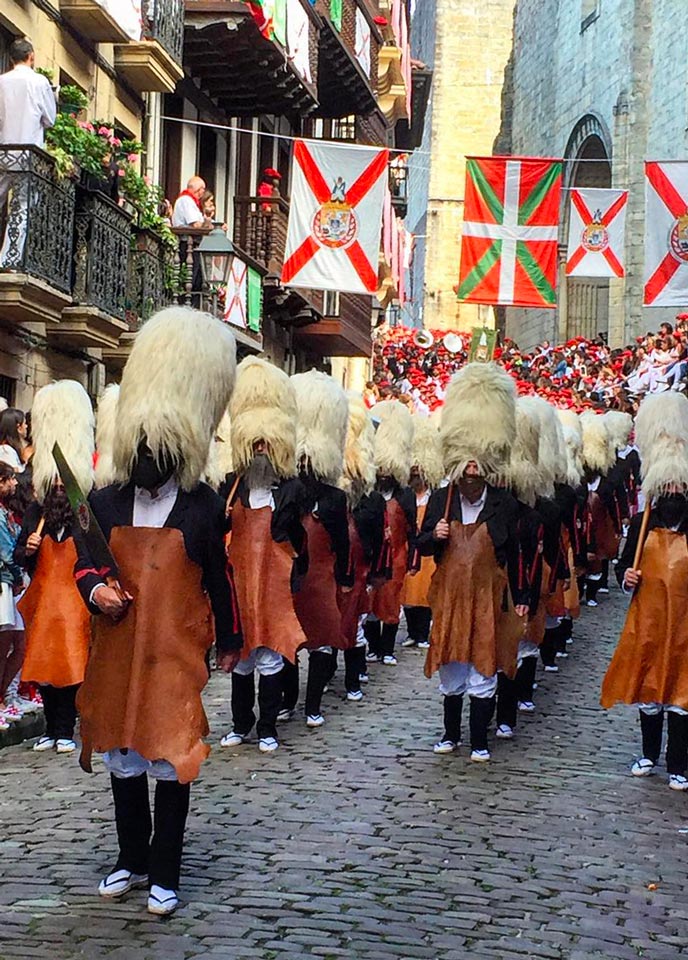
- 24 Zhu, Y. and Salazar, N. B. (2015). ‘Heritage and Tourism’, In Meskell, L. (ed.) Global Heritage: A Reader. John Wiley & Sons, Inc. 242. Available at: https://www.academia.edu/12739602/Heritage_and_Tourism
- 25 Zhu, Y. and Salazar, N. B. (2015). ‘Heritage and Tourism’, In Meskell, L. (ed.) Global Heritage: A Reader. John Wiley & Sons, Inc. 243. Available at: https://www.academia.edu/12739602/Heritage_and_Tourism
- 26 Picard, M. (1990). ‘”Cultural Tourism” in Bali: Cultural Performances as Tourist Attraction’, Indonesia, 49, 37-74. Available at: https://doi.org/10.2307/3351053
- 27 Greenwood, D. J. (1977) ‘Culture by the Pound: an Anthropological Perspective on Tourism as Cultural Commoditization.’ in Smith, V. L. (ed., Hosts and Guests: the Anthropology of Tourism. Blackwell Publishers. 129-138, 301 H67:
How can tourism endanger ICH?
Tourism can result in the degradation or loss of traditions along with damage to a heritage community’s identity. This is all the more a risk when tourism developments are poorly planned and insensitive to (often local) culture and interests –whether wittingly or unwittingly. Even though tourism can have short-term benefits, if unplanned or badly managed it can damage resources, whether they are historical or cultural, and undermine their value(s).28 When bearer communities and groups are not adequately involved in tourism planning and development, misappropriations may occur, their rights may not be respected, they may eventually experience a negative self-image, and damage to their cultural values and limited benefits. Some ICH practices have been changed drastically or have disappeared totally after they have become purely touristic performances.
Tourism can radically change the rhythm of the year as a seasonal activity, disrupting and diminishing cyclical cultural practices. It can also cause communities to lose interest in ICH practices or abandon them entirely in favour of a tourism sector that is more lucrative and demands extensive attention. In many places around the world, tourism is a “monocrop”, as happens in the agricultural sector when there is dependence upon a single crop, disasters or unforeseen conditions can devastate an economy. Tourism as a monocrop also means that ICH related to other sources of livelihood lose their presence and functions.29 The great danger of tourism as monocrop was dramatically illustrated during much of the COVID pandemic, which had a disastrous impact upon many communities that rely on tourism as the dominant source of income.
Cannibal Tours
In 1988, as living heritage awareness was growing around the world, Denis O’Rourke filmed an anthropological documentary in Papua New Guinea called Cannibal Tours.30 This film showcases the changes in the local population’s behaviour due to the arrival of tourism, unconsciously disturbing the social stability, the cultural and social practices of Papuans. This documentary highlights tourism management of then shaped distorted cultural representations, when western tourists went on ‘safaris’ amongst the “noble savages”, to use Michel de Montaigne’s word describing an idealisation of Indigenous peoples.31 O’Rourke underlines the voyeurism present in tourism in the 20th century, which can still be visible in some badly managed tourism activities where local populations are showcased in a negatively objectified and commodified manner.
@ “File: Dennis O’Rourke.jpg” by Chris Owen (photographer), Camerawork Pty Ltd (company that owns rights to the photo) is licensed under CC BY-SA 3.0.
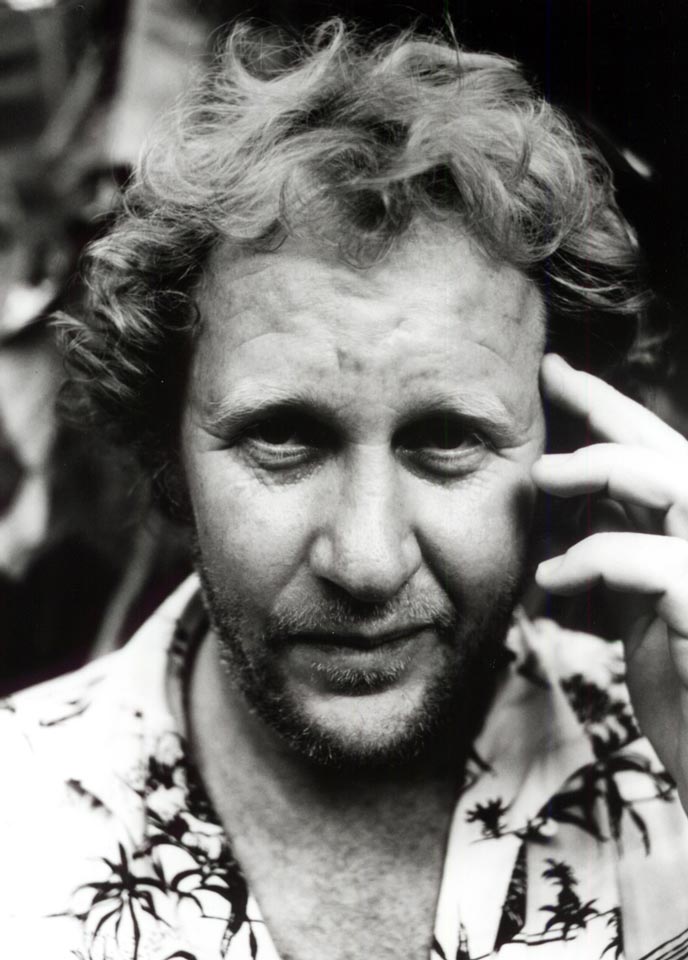
When tourism industries are owned and operated by outside interests, without participation of the communities concerned in the planning and decision-making, these people become dependent on a so-called ‘external’ salary, with a loss of autonomy on a local or national basis. And if the number of people working for this business increases, other activities can cease. In places controlled by big tourism companies, family disruptions are often observed as the youngest seek to earn money by leaving their hometowns and their families behind. This phenomenon may involve a massive exodus to where the money is.32 It results in an internal migratory flow which creates an imbalance in the exploitation of natural resources, disrupting the social order and resulting in great damage to ICH. In big cities where tourism represents a big part of the local economy, prices of land, of rent, of admission fees, and the cost of living increase drastically because of the presence of tourists, frequently generating gentrification.33 Inhabitants flee city centres because of this negative impact of urban tourism, and the (sense of the) place itself can change.34
The marketing of Macau’s culinary heritage
The city’s culinary heritage helped make Macau a significant tourist destination in this region of China, partly through marketing of its pastry delicacies. While residents have certainly benefited from tourism activity, rising rentals in the city centre have also, however, pushed many people cheaper locations to the outskirts of the city.35
@ www.flickr.com photos razlan79 3892843298 in photostream

UNESCO’s World Heritage List as well as the Representative List of Intangible Cultural Heritage of Humanity became symbols of ‘cultural recognition’ and ‘value’ in the eyes of tourists, even though driving increased tourism was not the objective of these designations. The World Heritage List has even been called an “ever-expanding tourist’s guide to hundreds of wonders in the modern world.” The Lists have had a substantial ‘marketing effect’. It is common knowledge that nomination files for UNESCO Lists are prepared with the hope of attracting an influx of tourists, which generates significant economic benefits. In some contexts not only the understanding seems lacking of what a World Heritage List inscription is supposed to be or to do, but tourism development is even combined with the disappearance of local, traditional cultural practices. Some local governments have taken the matter into their own hands becoming interest groups with their own marketing ideas and policy agendas where profit is the main or only focus, lacking a sustainable management model and appropriate heritage safeguarding measures.36
Touristification of UNESCO Listed heritage
The Summer solstice fire festivals in the Pyrenees were nominated by Andorra, Spain and France and inscribed in the UNESCO Representative List in 2015. The solstice festivals traditionally take place on the 23rd of June (St John’s Day). Once on the Representative List, however, a local government in France changed the timing of the festival, so that it would happen on a Saturday and attract more tourists.
In Spain, the inscription has generated an influx of tourists with an impact on the practice: in the villages concerned, some of the practitioners, especially young people, are mobilised to welcome visitors instead of taking part in the ritual; some then prefer to leave their village to celebrate the ritual in another which is not affected by the inscription; eventually some local authorities decided to close public access to the village during the festival.
@ “Fireworks at the Feux de la Saint Jean Celebration, Perpignan, France” by vic_burton is licensed under CC BY-SA 2.0.

- 28UNESCO Office Bangkok and Regional Bureau for Education in Asia and the Pacific, Establishment Initiative for the Intangible Heritage Centre for Asia-Pacific (2008). Safeguarding Intangible Heritage and Sustainable Cultural Tourism: Opportunities and Challenges. UNESCO-EIIHCAP Regional Meeting, 4. Available at: https://unesdoc.unesco.org/ark:/48223/pf0000178732
- 29El Alaoui, F. ‘L’impact social’, Le tourisme équitable. Available at: https://tourismeequitable.wordpress.com/limpact-du-tourisme-classique/limpact-social/
- 30O’Rourke, D. (1988). Cannibal Tours. 67 minutes, produced by IPNGs.
- 31Montaigne, M. (1962). Essais, I,31. Paris: Garnier.
- 32O’Rourke, D. (1988). Cannibal Tours. 67 minutes, produced by IPNGs.
- 33Zhu, Y. and Salazar, N. B. (2015). ‘Heritage and Tourism’, In Meskell, L. (ed.) Global Heritage: A Reader. John Wiley & Sons, Inc. 243. Available at: https://www.academia.edu/12739602/Heritage_and_Tourism
- 34Jeanmougin, H. ‘Gentrification, nouveau tourisme urbain et habitants permanents : des conflits de coprésence révélateurs de “normes d’habiter” divergentes’, Téoros, (1), 39. Available at: http://journals.openedition.org/teoros/4007
- 35United Nation World Tourism Organization (2012), Tourism and Intangible Cultural Heritage. 55-56. Available at: https://doi.org/10.18111/9789284414796
- 36Zhu, Y. and Salazar, N. B. (2015). ‘Heritage and Tourism’, In Meskell, L. (ed.) Global Heritage: A Reader. John Wiley & Sons, Inc. 247. Available at: https://www.academia.edu/12739602/Heritage_and_Tourism
How can tourism enhance and support safeguarding actions?
“The economic gain from tourism can also be highly beneficial for the safeguarding of the intangible heritage”37
The economic, social, environmental and cultural value of intangible cultural heritage can be enhanced through ICH-based (sustainable) tourism for the benefit of communities, groups or individuals concerned.38
From an economic standpoint, tourism based on ICH can provide new employment opportunities to local populations and alleviate poverty. Tourism can become a way to generate new sources of income that remain in the community, through local initiatives, designed to safeguard and enhance ICH for its long-term continuity.39 It often induces community training in tourism tools and management, which could pave the way to generating local tourism businesses, ideally owned by bearer communities themselves who would be able to make their own investment and marketing decisions. It can contribute to rural development when there is minimal ‘leakage’ of the economic benefits.
Job opportunities at the Shewula Mountain Camp
In the Kingdom of Eswatini, the Shewula Mountain Camp was established and is fully owned and run by a local community. The Shewula Mountain Camp offers visitors the possibility to discover local ICH such as songs and dances, local crafts and traditional beliefs. All benefits are distributed to the members of the community to develop and improve their daily life. It generates many job opportunities not only in the camp itself but also around HIV/AIDS projects in the area, through its craft centre and Orphan Care Program.
Tourism can reduce rural migration to cities, helping to assure cultural distinctiveness and diversity in an increasingly globalised world. Appropriate management of (sustainable) tourism respects social values of intangible heritage expressions, while finding a balance between educational activities and entertainment in the light of a tourism approach. By involving young generations in the making of these ICH tourism offers, interest in safeguarding is transmitted across age groups, instead of being abandoned by the youngest who tend to leave traditional and rural lifestyles aside.
Sustainable ICH tourism can reduce negative impacts of tourism on the environment by using and managing resources responsibly. Tourism that is both environmentally and culturally sustainable has become increasingly marketable, and it contributes to the well-being of a community.
ICH tourism can create or reinforce a sense of pride within a community or a group by enabling agency for heritage communities in sustaining their treasured traditions. Sustainable and responsible tourism can also allow the transmission of ICH to future generations and can generate a better understanding/awareness about its diversity, safeguarding, preservation, enhancement and sustainability.
Some ICH practices (festivals, performing arts, etc) attract a tremendous amount of people in the same place and therefore induce an increased visibility of such ICH elements and facilitate awareness-raising amongst tourists. Well managed and well promoted, an ICH-specific event can raise awareness among thousands of people who, until then, may not have realised the importance of such an event on a cultural level.
Tourism can also generate space for non-touristic practices of ICH within communities. When in charge of their own touristic offers, they can control the access given to their practices, their lands, their living habits, etc. and maintain traditional customary contexts. This means that there can be ICH activities and culturally significant places that are maintained away from the eyes of tourists, continuing to retain their customary significance for rituals, ceremonies and everyday life. Other kinds of ICH can be presented to tourists on a community’s own terms, where and when presentation to outsiders is felt to be appropriate.
Controlling tourist access to sacred spaces in Australia
In the Uluru-Kata Tjuta National Park, visitors are asked to stay away from sacred sites in the area in order to safeguard the network of paths related to Indigenous sacred beliefs. The management team, which includes Indigenous people, informs tourists of the reasons why they are not allowed to walk past some restricted areas, and educates them on the need to protect and safeguard ICH practices.
@ “Uluru-Kata Tjuta” by alexhealing is licensed under CC BY 2.0.

- 37UNESCO Office Bangkok and Regional Bureau for Education in Asia and the Pacific, Establishment Initiative for the Intangible Heritage Centre for Asia-Pacific (2008). UNESCO-EIIHCAP Regional Meeting: Safeguarding Intangible Heritage and Sustainable Cultural Tourism: Opportunities and Challenges. 30. Available at: https://unesdoc.unesco.org/ark:/48223/pf0000178732
- 38Kim, S., Whitford, M. and Arcodia, C (2019). ‘Development of intangible cultural heritage as a sustainable tourism resource: the intangible cultural heritage practitioners’ perspectives’, Journal of Heritage Tourism, 14(5-6), 431. Available at: https://doi.org/10.1080/1743873X.2018.1561703
- 39United Nation World Tourism Organization (2012), Tourism and Intangible Cultural Heritage. 1-7. Available at: https://doi.org/10.18111/9789284414796
4. MORE IN DEPTH - READS
Sustainable tourism
Sustainable tourism, according to the United Nations World Tourism Organization (UNWTO), is “tourism that takes full account of its current and future economic, social and environmental impacts, addressing the needs of visitors, the industry, the environment, and host communities”.40 Based on social, economic and environmental pillars41, it relates to intangible heritage because of its will to respect and promote these values and to protect the essence of what makes tourism possible to ensure its sustainability for generations to come.
More recently, UNWTO <added the cultural aspect for the understanding of sustainable tourism.</42 This addition of a cultural pillar is what touches on intangible heritage. The social impact promotes a respectful relationship with the involved populations, but the cultural aspect of this new definition touches on the cultural identity and integrity of a group of people.
UNWTO on sustainable tourism:
Sustainability principles refer to the environmental, economic, and socio-cultural aspects of tourism development, and a suitable balance must be established between these three dimensions to guarantee its long-term sustainability.
Thus, sustainable tourism should:
- 1. Make optimal use of environmental resources that constitute a key element in tourism development, maintaining essential ecological processes and helping to conserve natural heritage and biodiversity.
- 2. Respect the socio-cultural authenticity of host communities, conserve their built and living cultural heritage and traditional values, and contribute to inter-cultural understanding and tolerance.
- 3. Ensure viable, long-term economic operations, providing socio-economic benefits to all stakeholders that are fairly distributed, including stable employment and income-earning opportunities and social services to host communities, and contributing to poverty alleviation.
Sustainable tourism development requires the informed participation of all relevant stakeholders, as well as strong political leadership to ensure wide participation and consensus building. Achieving sustainable tourism is a continuous process and it requires constant monitoring of impacts, introducing the necessary preventive and/or corrective measures whenever necessary.
Sustainable tourism should also maintain a high level of tourist satisfaction and ensure a meaningful experience to the tourists, raising their awareness about sustainability issues and promoting sustainable tourism practices amongst them.
Available at: https://www.unwto.org/sustainable-development
Sustainable tourism is a broad concept that includes various forms of tourism: equitable tourism, ecological tourism, ethical tourism, soft tourism, responsible tourism, green tourism, community tourism, solidarity tourism, agro-tourism, etc.43 They all rely on the specific values which tourists share not only with each other but also with the tourism stakeholders that create and put together a touristic offer linking many people together (accommodation, transport, guides, activities, etc.) and generating opportunities of sustainable development for the involved population.
Visitors can be overwhelmed by the range of sustainable tourism opportunities available on the market as more and more companies are elaborating purportedly sustainable products and some stakeholders use sustainability to fulfil economic and political agendas with limited benefit to local communities however. To make sure these offers effectively respect sustainable tourism values, many countries are beginning to develop labels, inscriptions, initiatives or certifications for tourism activities in order to certify their legitimate involvement in the sustainable movement. Some initiatives are national, others are regional (e.g. the European Eco-label advocate the good management of resources, garbage recycling, the use of organic, local green products and food, the European Charter for Sustainable Tourism in Protected Areas44, etc) or even global (Green Globe gives a certification to actors that are sensitive to responsible management of cultural heritage, the environment and the economic and social dimensions of a destination)45, involving many types of businesses: lodging, tourism operators, catering professionals, transportation, etc.46 Although they promote sustainability frameworks for heritage tourism, much remains to be done to implement these actions.
Various sustainable tourism forms concern cultural aspects that could be damaged by bad tourism management, but the one that probably reaches the most common ground with the safeguarding of intangible cultural heritage is community tourism. This form of tourism involves populations in the development of local tourism offers made to their benefits. Community members are in charge of building and managing the accommodation structures and the local services. They have complete control over the financial benefits, of which a good part is destined to improve their own life conditions, while respecting nature and tradition.47 Community-driven tourism often offers activities linked with intangible heritage such as handicraft workshops or sharing traditions. Giving opportunities to local populations to manage their own tourism activities is one way to ensure that ICH practitioners are involved in the creation of tourism that fits their needs and thus ensure ICH’s continuity and transmission.
Equitable, responsible, ethical and solidarity tourism also touch upon the cultural aspect of sustainable tourism. The latter engages the responsibility of all actors in order to offer a tourism that is respectful of “human, cultural, economic and environmental resources of the society, that form the life framework of the local communities”.48
- 40 United Nations World Tourism Organization. EU guidebook on sustainable tourism for development. Available at https://www.unwto.org/fr/EU-guidebook-on-sustainable-tourism-for-development
- 41 Van der Yeught, C, (2010). Improving strategic diagnoses: to foster the mutation of tourism destinations into sustainable development ventures. 59-75. Available at: https://doi.org/10.4000/tourisme.321
- 42 United Nations World Tourism Organization. on Sustainable development. Available at: https://www.unwto.org/sustainable-development
- 43 Juganaru, I. D., Juganaru, M. and Anghel, A. Sustainable tourism types. Ovidius University of Constanta. Available at: http://feaa.ucv.ro/AUCSSE/0036v2-024.pdf
- 44 Europark Federation. European Charter for Sustainable Tourism in Protected Areas. Available at https://www.europarc.org/library/europarc-events-and-programmes/european-charter-for-sustainable-tourism/
- 45 Green Globe. Green Globe Certification, available at: https://greenglobe.com/green-globe-certification/
- 46 Petit, P. (2017). Tourisme responsable: les labels. Available at: https://www.consoglobe.com/francais-tourisme-responsable-2426-cg
- 47 Juganaru, I. D., Juganaru, M. and Anghel, A. Sustainable tourism types. Ovidius University of Constanta. Available at: http://feaa.ucv.ro/AUCSSE/0036v2-024.pdf
- 48 Juganaru, I. D., Juganaru, M. and Anghel, A. Sustainable tourism types. Ovidius University of Constanta. 801 Available at: http://feaa.ucv.ro/AUCSSE/0036v2-024.pdf
Safeguarding ICH through sustainable tourism
“Culturally as well as ecologically sustainable tourism, along with sustainable development, is a critical issue when heritage is the major attraction of tourism” 49
“Intangible heritage tourism is never an end in itself, and it is always paramount that the intangible heritage communities themselves benefit from actions involving their intangible heritage” 50
Sustainable tourism has many positive impacts on ICH compared to conventional tourism. It aims to respect environmental, economic, social and cultural aspects while allowing visitors to enjoy their holiday. It is a form of tourism that adapts very well to the safeguarding of ICH as it “provides more meaningful connections with local people, and a greater understanding of local cultural, social and environmental issues”51. Sustainable development is generally recommended when safeguarding ICH, regarding tourism or any other activities, as it contributes to “sustainable development for human well-being, dignity and creativity in peaceful and inclusive societies.”52
As already mentioned in the Introduction of this web dossier, from the perspective of heritage safeguarding, tourism can be both an opportunity and a risk. Ensuring positive outcomes requires careful consideration, planning, implementation, and management (Zhu & Salazar). Sustainable tourism should be developed in a very thoughtful way, by adopting strategies designed to diminish tourism’s negative impacts on ICH without sacrificing its positive impacts. By diminishing, mitigating and avoiding negative impacts of tourism on its elements, sustainable tourism can bring great opportunities for safeguarding ICH. It must consider the current and future impacts of tourism on ICH, including economic, social and environmental dimensions. Tourism and heritage actors should face up to the active role of tourism in heritage management and devote more effort to the effective redistribution of the financial benefits of tourism to the communities and groups concerned.
There is a real need for initiatives that join tourism and preservation with sustainability as “more attention needs to be paid to ethical issues, in particular the involvement of local communities, ethical codes of tourism”53. However, international agencies are more and more aware of inappropriate approaches used in the past, and the necessity to better incorporate the “living practices of local inhabitants and their knowledge” (i.e. intangible cultural heritage) in the endeavour to make tourism sustainable and in the actions taken to protect heritage in general.54
What does the UNESCO 2003 Convention say about tourism?
The UNESCO 2003 Convention for the Safeguarding of the Intangible Cultural Heritage, in its Preamble already considers ‘the importance of the intangible cultural heritage as a mainspring of cultural diversity and a guarantee of sustainable development.’ In the course of time, the need for an official framework and to give guidelines on this subject came to the foreground.
Operational Directives, paragraph 187 (see below) provide recommendations regarding the safeguarding of ICH in tourism activities. They emphasise the need for tourism activities to respect the safeguarding of ICH and the wishes and needs of host communities. They also balance the interests of tourism businesses, governments and cultural practitioners to ensure the viability, cultural meanings, social functions and sustainability of ICH and promote the adoption of legal, technical, administrative and financial measures, including intellectual property rights, privacy rights and any other appropriate forms of legal protection, to ensure safeguarding.
UNESCO also established Ethical Principles for the safeguarding of ICH which apply to all dimensions of ICH, including tourism development.55
UNESCO’s Overall Results Framework for ICH integrates “inclusive economic development”, tourism and the Sustainable Development Goals.56
Operational Directives, paragraph 187:
States Parties shall endeavour to ensure that any activities related to tourism, whether undertaken by the States or by public or private bodies, demonstrate all due respect to safeguarding the intangible cultural heritage present in their territories and to the rights, aspirations and wishes of the communities, groups and individuals concerned therewith.
To that end, States Parties are encouraged to:
- assess, both in general and in specific terms, the potential of intangible cultural heritage for sustainable tourism and the impact of tourism on the intangible cultural heritage and sustainable development of the communities, groups and individuals concerned, with particular attention to anticipating potential impact before activities are initiated;
- adopt appropriate legal, technical, administrative and financial measures to:
- ensure that communities, groups and individuals concerned are the primary beneficiaries of any tourism associated with their own intangible cultural heritage while promoting their lead role in managing such tourism;
- ensure that the viability, social functions and cultural meanings of that heritage are in no way diminished or threatened by such tourism;
- 49 UNESCO Office Bangkok and Regional Bureau for Education in Asia and the Pacific, Establishment Initiative for the Intangible Heritage Centre for Asia-Pacific (2008). Safeguarding Intangible Heritage and Sustainable Cultural Tourism: Opportunities and Challenges. UNESCO-EIIHCAP Regional Meeting, 28. Available at: https://unesdoc.unesco.org/ark:/48223/pf0000178732
- 50 Van der Zeijden, A., Neyrinck, J., Adams, K. M., Van Ouwerkerk, F., Van Gorp, B. and Catteeuw, P. (2020). ‘Intangible heritage as a tourist destination. Contribution to safeguarding intangible cultural heritage through sustainable tourism’, Volkskunde, 121(4).
- 51 UNESCO (2018). Overall Results Framework for the 2003 Convention. Available at: https://ich.unesco.org/doc/src/41571-EN.pdf
- 52 UNESCO (2018). Overall Results Framework for the 2003 Convention. Available at: https://ich.unesco.org/doc/src/41571-EN.pdf
- 53 Zhu, Y. and Salazar, N. B. (2015). ‘Heritage and Tourism’, In Meskell, L. (ed.) Global
Heritage: A Reader. John Wiley & Sons, Inc. 253-254. Available at: https://www.academia.edu/12739602/Heritage_and_Tourism - 54 Zhu, Y. and Salazar, N. B. (2015). ‘Heritage and Tourism’, In Meskell, L. (ed.) Global
Heritage: A Reader. John Wiley & Sons, Inc. 253-254. Available at:https://www.academia.edu/12739602/Heritage_and_Tourism - 55 UNESCO (2018). Operational Directives. Available at https://ich.unesco.org/en/directives
- 56 UNESCO (2018). ‘Guidance Note for Core Indicator 13’, Overall Results Framework. Available at https://ich.unesco.org/en/overall-results-framework-00984#guidance-notes-by-indicators
What does sustainable tourism look like in the context of ICH?
-
Sustainable tourism follows ethical principles, contributing to cultural sustainability
The 2008 Regional Meeting for Safeguarding Intangible Heritage and Sustainable Cultural Tourism held in Bangkok by the UNESCO Office Bangkok and the Regional Bureau for Education in Asia and the Pacific underlined that by generating financial benefits, the tourism industry can strengthen the self-respect of local populations as well as their values and identity, which contributes to the safeguarding of their ICH elements.57 This is aligned with UNESCO’s Ethical Principles for the safeguarding of ICH.58 The utmost consideration should be given to ethical principles and professional conduct. Ethical principles for engaging with ICH focus on its valuing, its beneficiaries, access, impact, threats, respect and diversity, …. and can be signposts for understanding how to go about.
Mapping ICH and branding ICH tourism offers are, from a tourism perspective, efficient ways to identify local, regional or national assets, to increase the sense of pride amongst community members, to raise awareness on specific ICH elements and most of all to promote ICH safeguarding. -
Sustainable tourism is community led
Practitioners and bearers are best able to ensure the respect of a cultural practice or to decide how it should be put forward, or branded, in order to ensure its safeguarding for future generations. The World Charter for Sustainable Tourism +20 states that local communities should thus be empowered and involved in planning and developing tourism activities. Scholars report that empowerment of ICH practitioners facilitates the development of tourism strategies suiting each ICH element. Today, the unequal relationship between tourism stakeholders and ICH practitioners is often the reason why its safeguarding isn’t effective.61
-
Sustainable tourism creates equitable, economically stable benefits for (local) communities
Sustainability presupposes a fair approach to sharing economic benefits among all stakeholders in a tourism initiative. In the context of ICH, this implies that particular attention should be paid to the bearer communities concerned. Indeed, UNESCO’s 7th Ethical Principle for the safeguarding of ICH states that “The communities, groups and individuals who create intangible cultural heritage should benefit from the protection of the moral and material interests resulting from such heritage, and particularly from its use, research, documentation, promotion or adaptation by members of the communities or others.62
-
Sustainable livelihoods from tourism depend on diversified sources of income
Tourism can be rapidly affected by political, economic or environmental factors, such as a recession or a pandemic, or a decline in the popularity of a destination. Thus, tourism should ideally not be the sole source of income for local communities. It should not be a monocrop, like a single crop vulnerable to econòmic disaster when a harvest fails because of weather or other unforeseeable conditions.
-
Sustainable tourism development planning that depends on ICH is not the same as ICH safeguarding planning
People and organisations engaged in tourism development may have different interests from those aiming to safeguard the ICH, even if both depend on the existence of the ICH. These different interests and dependencies should be mapped out, and common aims and goals identified that achieve the best possible outcome for both. A “parallel relationship strategy could achieve the safeguarding of ICH cultural values while concomitantly facilitating the socio-economic value of ICH via the commercial promotion of ICH”.63 However, there is not a hard and fast dichotomy between actors engaging in safeguarding and commercial purposes. For example, ICH bearers seek to market their crafts or reach new audiences with their music while retaining the integrity of their traditions, conjoin these two roles.
-
Sustainable tourism promotes ICH practices in a way that is environmentally sustainable
The UN’s 2030 Agenda and Sustainable Development Goals promote the development of sustainable tourism and make it a point of honour to promote local culture and products, and thus: intangible heritage. Sustainable tourism should ensure optimal use of environmental resources and ensure that ICH tourism activities do not increase the environmental footprint. Tourism should be a factor of sustainable development that emphasises both natural environment protection and reinvestment of the revenue into heritage. Tourism uses of the cultural heritage of humankind should contribute to its enhancement. ICH practices are in many cases sustainable in themselves, contributing to a generally positive image of the destination as they rely on human workforce (small numbers) and a healthy relation to its environment, especially when it comes to food security and land use. Centuries of practice have taught people how to use their environment in a manner that maintains a balance within available resources. This is key to sustainability.
However, also increased demand for ICH products and new pressures such as climate change can overstretch natural resources, so the impact of ICH practice on the environment as well should be constantly monitored and managed.
- 61 Kim, S., Whitford, M. and Arcodia, C (2019). ‘Development of intangible cultural heritage as a sustainable tourism resource: the intangible cultural heritage practitioners’ perspectives’, Journal of Heritage Tourism, 14(5-6), 432. Available at: https://doi.org/10.1080/1743873X.2018.1561703
- 62 UNESCO (2015). Ethical Principles for Safeguarding Intangible Cultural Heritage. Available at: https://ich.unesco.org/en/ethics-and-ich-00866
- 63 Kim, S., Whitford, M. and Arcodia, C (2019). ‘Development of intangible cultural heritage as a sustainable tourism resource: the intangible cultural heritage practitioners’ perspectives’, Journal of Heritage Tourism, 14(5-6), 432. Available at: https://doi.org/10.1080/1743873X.2018.1561703
Monitoring and Evaluation of sustainable tourism, and its relation to ICH
In 2004 the UNWTO published the first Guidebook dealing with indicators of Sustainable Development for Tourism Destinations64, which also initiated a process of measuring the sustainability of tourism (see below).65 In its framework, sustainability is addressed via the 3 aforementioned pillars of (1) optimal use of environmental resources, (2) respect of socio-cultural authenticity of host communities and (3) economic benefits for all stakeholders. The Guidebook has been influential in creating a better understanding of the relationships between ICH and tourism, emphasising the centrality of the host community. The monitoring methodology depends heavily on participatory processes, and the use of indicators for assessing the impact(s) of tourism on local communities as well as on visitors (p. 22-54 Key Steps to Indicators Development and Use).
This approach suggests possible ways of representing tourism impacts on safeguarding under the Overall Results Framework of the UNESCO 2003 Convention, which was developed in order to assess the impact of safeguarding activities under the Convention in different countries.
Developing indicators for monitoring purposes could thus be beneficial for sustainable tourism as well as for safeguarding processes.
The following parameters from the Guidebook (section 3) can be considered when planning tourism activities related to ICH from a local and community-based perspective (even though there is nothing in these parameters that specifically measures the impact of tourism on practice and transmission of ICH, the absence of which is to be noted):
- Wellbeing of host communities including:
- Local satisfaction with tourism (Attitudes, dissatisfaction, community reaction)
- Effects of tourism on communities (Community attitudes, social benefits, changes in lifestyles, housing, demographics)
- Access by local residents to key assets (Access to important sites, economic barriers, satisfaction with access levels)
- Sustaining cultural assets
- (Cultural sites, monuments, damage, maintenance, designation, preservation)
- Community participation in tourism
- Community and destination economic benefits
- Limiting impacts of tourism activity including:
- Controlling noise levels
- Managing visual impacts of tourism facilities and infrastructure
- Controlling tourist activities and levels including:
- Controlling Use Intensity (stress on sites and systems, tourist numbers, crowding)
- Managing events (sport events, fairs, festivities, crowd control)
- Destination planning and control
- (integrating tourism into local/regional planning)
Addressing wellbeing of host communities is directly linked to ICH as it encompasses the daily activities of communities, which inevitably involves ICH practices. As suggested in the Guidebook “… actions by the industry to maintain a positive relationship between hosts and tourists can anticipate and prevent incidents and negative effects.” The same goes for ICH practitioners. As members of a host community they are entitled to set limits to the activities initiated by the tourist sector in order to prevent loss of privacy or change of lifestyles.
In the context of ICH, access can be viewed as access to information and/or public spaces. Access to public spaces is sometimes denied or restricted for locals after tourism initiatives are put in place. These can be sacred sites but also places where people gather for festive or social events. Tourism has taken over many historical and attractive spaces which a few years ago – and in some countries with long tourism tradition even for decades – were part of everyday local practices, preventing the viability of the practice or altering its performativity.
Community participation and management (that integrally involves communities and groups of ICH practitioners if directly addressed by a tourist plan) is key to all aspects of sustainable ICH tourism production. If actively participating they can contribute to urban planning and visual impacts (building techniques and knowledge about nature, crafts), managing events (rituals and performing arts) directly influencing the viability of the practice and planning in general if an ICH element is the basis for a tourist destination.
Even though the guidelines for developing sustainable tourism do not directly address ICH, they can be applied to measures to prevent harmful actions to host communities through tourism. Accordingly, actions to raise awareness on the challenges, risks and opportunities tourism brings to ICH practices should be encouraged in order to prevent damage and reinforce safeguarding.
Measuring the sustainability of tourism
With the support of the United Nations Statistics Division (UNSD), UNWTO has launched an initiative, Towards a Statistical Framework for Measuring the Sustainability of Tourism (MST). The aim is to develop an international statistical framework for measuring tourism’s role in sustainable development, including economic, environmental and social dimensions.
Such a standards-based framework can further support the credibility, comparability and outreach of various measurement and monitoring programmes pertaining to sustainable tourism, including the utilisation of Sustainable Development Goals (SDG) indicators and UNWTO’s International Network of Sustainable Tourism Observatories (INSTO).
Overall, the statistical framework from the MST will provide an integrated information base to better inform sustainable tourism, to facilitate dialogue between different sectors and to encourage integrated, locally relevant decision making.
The MST will also foster future dialogue with the ICH sector, especially via the potential links to be elaborated with the Overall Results Framework.
- 64 United Nations World Tourism Organization (2004). Indicators of Sustainable Development for Tourism Destinations A Guidebook. Available at: https://www.e-unwto.org/doi/epdf/10.18111/9789284407262
- 65 United Nations World Tourism Organization. On Measuring the Sustainability of Tourism. Available at: https://www.unwto.org/standards/measuring-sustainability-tourism
5. FIRST STEPS TO ACTION
General objectives and guidelines for ICH tourism
General objectives and guidelines for ICH tourism
- Bearer community involvement: bearer communities and practitioner groups should always be involved in the development of tourism related to their ICH, through strong and trusting partnerships based on communication, transparency and knowledge sharing.
- ICH safeguarding: Safeguarding measures should always be taken into account when developing ICH tourism. Tourism activities should ideally enhance (and certainly not threaten) the viability of the living heritage practice and promote its meaning and value to the communities concerned.
- Design of the tourism offer and assessment of impacts: The impacts of the development of any ICH tourism offer, both positive and negative, should be assessed with the participation of the bearer communities, groups and individuals concerned. Their participation should be planned prior to any development as well as in follow-up of the implementation (monitoring and evaluation).
- Respect of sustainable development objectives and approaches: ICH tourism should be thought of with sustainable development in mind, with respect to the social, cultural, economic and environmental aspects of sustainability.
- Respect the value and meaning of ICH elements: The value and meaning of any ICH element presented in a tourism offer should always be respected, whether in its development or in the product itself. Heritage-sensitive design needs to reflect on the kinds of value and meaning the community wants to communicate, as well as the synergies between a tourism activity and safeguarding priorities.
- Avoid over-commercialization and decontextualization: Inappropriate change and loss of social context and meaning associated with an ICH element through tourism activities should be limited.
- Give back to bearer communities: Bearer communities or groups should be the main beneficiaries of any perceived financial or economic benefits that may arise from the development of ICH tourism. Ownership of tourism businesses should reside within the bearer’s own community whenever possible.
- Recognize and respect the customary rights, practices and expressions of communities: Forms of legal protection, such as intellectual property rights and privacy rights, should be provided to ICH practitioners, bearers and their communities to ensure their ICH is not exploited by others for commercial or other purposes. The importance of customary rights of communities to spaces necessary for the practice and transmission of ICH should be recognized in tourism policies and/or legal and administrative measures.
A checklist about planning for a tourism initiative actively centred on ICH
Planning the development of a tourism initiative centred on safeguarding intangible cultural heritage may at times seem complex. The impacts and consequences, both negative and positive, are considerable and need to be properly addressed.
Here is a checklist of actions that can contribute to an efficient ICH safeguarding when developing a tourism offer:
-
Ensure that bearer communities are leaders in the development of a tourism offer related to their ICH by:
- Ensuring bearer community involvement through strong and trusting partnerships based on communication, transparency and knowledge sharing.
- Ensuring that a range of ICH stakeholders (e.g. practitioners, groups, associations, …) are involved and consulted.
- Supporting bearer community engagement from A to Z, in the consultation process, creative phase, strategy and goals development, management phases, etc. Develop programs that equip community members to direct tourism activities and own local tourism businesses.
- Empowering bearer community members, where needed, with the skills and knowledge to drive and direct in tourism-related planning, implementation and monitoring activities
-
Assess the potential impacts of tourism and manage risks and threats properly by:
- Supporting communities to determine impacts, and to identify what constitutes a threat to their ICH, “with particular attention to anticipating potential impact before activities are initiated” (par. 187 of the 2003 Convention’s Operational Directives).
- Elaborating a strategy regarding threats to be managed or mitigated thereafter.
- Defining indicators to monitor and assess impacts, and on the roles of each stakeholder involved in this process.
- Avoiding any action threatening ICH safeguarding.
- Learning about what is working and what is not. Monitoring and analysing the results of such tourism interventions with the communities or groups.
- Adapting the tourism offer to better achieve community-identified goals and results.
-
Respect the rights of communities and groups that create, bear and transmit ICH by:
- Creating guidelines and regulations which respect the interests of sustainable tourism and the rights of communities.
- Respecting customary restrictions on access to ICH (such as a sales ban on certain ICH-related objects, or the restriction or denial of access to certain rituals and places within the host community).
- Where appropriate, using community centred intellectual property rights, moral rights or other legal frameworks to protect the interests of communities in respect of their ICH, and avoid third parties to wrongly acquire IP rights over ICH.
-
Ensure the viability, value and meaning of ICH elements recognized by a community that may be presented in a tourism offer by:
- Ensuring that practitioners are primary actors in the design of tourism initiatives.
- Designing tourism offers that support ICH viability in line with identified safeguarding needs, and are aligned with the value and meaning of the ICH to communities.
-
Respect the dynamic and living nature of ICH elements and the will and wishes of the communities they concern by
- Respecting changes within a bearer community and not freezing an ICH element in a search for ‘authenticity’.
- Supporting communities in appropriately adapting ICH-related products and services to new circumstances.
-
Inform third parties, including tourists, about ICH safeguarding and the cultural value of ICH elements by:
- Developing educational approaches within touristic activities related to ICH, raising awareness of the values and functions of ICH, as well as its character of ‘living heritage’ in human practices, calling on visitors to understand and help care for this heritage. Educational activities should prioritise the community’s perspectives on their ICH, in their own voices.
- Supporting communities in drafting, publicising and implementing codes of conduct or guidelines for visitors and tourists.
(see for example the Sami tourism code) - Facilitating transmission of knowledge regarding sustainable development and ICH safeguarding within the tourism industry.
-
Promote sustainable development through ICH tourism development by:
- Ensuring economic growth, social inclusivity and environmental protection when designing an ICH tourism offer.
- Encouraging the development of strategies to promote ICH-related products and services via official shops, licences or labels, and the use of quality or product of origin accreditations, etc.
- Developing sustainable tourism offers that improve the livelihood of bearer communities by:
- Ensure that sustainable tourism offers create job opportunities for local communities concerned.
- Supporting practitioner or community owned sustainable tourism businesses.
- Creating small and medium-sized enterprises focused on sustainable development goals within their tourism activities.
-
Ensure that (local) bearer communities or groups are directly benefiting from the revenues generated by any ICH tourism activities by:
- Helping bearer communities access funding for their sustainable tourism offers.
- Supporting communities in negotiating agreements with third parties.
- Assessing the outcomes of partnerships with third parties.
-
Innovate to safeguard cultural heritage from inappropriate decontextualization, while facilitating sustainable tourism
Partnerships in Sustainable ICH Tourism: How to work together when designing ICH tourism
The relationship between tourism and intangible cultural heritage management is of major importance and depends on many aspects of the partnership between ICH practitioners and tourism stakeholders. For example, respect for the interests of each of the parties involved is one of the reasons why a relationship could be rewarding, successful and respectful. If tourism stakeholders and businesses only care about purely economic interests and do not give any attention to ICH safeguarding, or vice versa, the relationship cannot be beneficial to both sides and could have negative impacts on intangible heritage practices and/or practitioners.
There are a range of possibilities when shaping an ICH tourism initiative, from Community led tourism (primarily led by the bearer community) through multi stakeholder collaboration, in which authority should be yielded to enhance the position of the bearer community in the partnership. Consider cooperation with relevant experts, cultural brokers and mediators through a participatory approach.66 Such ‘third parties’ (individual, group or organisation) can play an intermediary role in devising and setting up sustainable intangible heritage tourism projects. As intermediaries, ‘mediators’ or ‘brokers’67 can bring together the many different stakeholders, all of whom play a role in the relationship between tourism and intangible heritage.68 Cultural brokers need to step back and let the community have control when it is practicable.
Here is a list of practical steps to be taken to ensure a sustainable partnership between intangible heritage practitioners and tourism stakeholders:
-
Work with stakeholders from various backgrounds and levels (private/public; national, regional, international, etc.) and reduce barriers by ensuring viable connections and coordination between all actors
-
Understand the interests of each party to get a global view of the final partnership by:
- Exchanging information about the interests, ways of working and goals of the different groups.
- Recognizing and accepting the individuality and autonomy of each actor.
- Organising training and information sessions about sustainable tourism and heritage for all the groups.
-
Create and reinforce strong partnerships between ICH actors and tourism stakeholders by:
- Ensuring shared authority to guarantee respect of everyone’s interests, yielding authority to communities when possible.
- Building mutual trust between various actors.
- Ensuring shared responsibilities between all actors.
- Forging effective synergies.
-
Encourage all stakeholders to share their knowledge, past experience and best practice/examples with others.
-
Build a transparent collaboration with total views on each other goals and results by:
- Listing short-term and long-term goals and needs.
- Analysing economic, social and environmental results/consequences and adapt if needed to ensure their sustainability.
-
Ensure a proper dialogue between actors at all stages.
-
Build partnerships with long-term common goals in mind.
-
Consider (or involve) a ‘mediator’ or ‘broker’ role, that can bring together different stakeholders and different approaches in the ICH tourism initiative under elaboration.
- 66 UNESCO (2003). ‘Safeguarding Intangible Cultural Heritage and Sustainable Development at the National Level’, UNESCO Convention for the Safeguarding of Intangible Cultural Heritage, Chapter 6, OD170 (…) While recognizing the interdependence between the safeguarding of intangible cultural heritage and sustainable development, States Parties shall strive to maintain a balance between the three dimensions of sustainable development (the economic, social and environmental), as well as their interdependence with peace and security, in their safeguarding efforts and shall to this end facilitate cooperation with relevant experts, cultural brokers and mediators through a participatory approach. Available at: https://ich.unesco.org/en/convention
- 67 Jacobs, M., Neyrinck J. and Van der Zeijden, A. (2014). ‘UNESCO, Brokers and Critical Success (F)Actors in Safeguarding Intangible Cultural Heritage’, Volkskunde, 115(3), 249-256. Available at: https://www.researchgate.net/publication/289898132_UNESCO_brokers_and_critical_success_F_actors_in_safeguarding_intangible_cultural_heritage
- 68 Van der Zeijden, A., Neyrinck, J., Adams, K. M., Van Ouwerkerk, F., Van Gorp, B. and Catteeuw, P. (2020). ‘Intangible heritage as a tourist destination. Contribution to safeguarding intangible cultural heritage through sustainable tourism’, Volkskunde, 121(4). Available at: https://immaterieelerfgoed.be/files/attachments/.1909/Volkskunde_2020_121_4_Inleiding.pdf (English text on p. 535)
6. EXAMPLES OF ICH TOURISM AND SUSTAINABILITY
Below here, you find examples of initiatives combining ICH and tourism, sharing experience from the field.
Examples include different types of tourism activities, are related to different domains of ICH, and are based in diverse contexts and in all regions of the world, thus offering the opportunity to explore the wide range of possible activities and approaches in sustainable ICH tourism. Both valuable and worrisome aspects are presented, illustrating existing practice, issues and solutions.
Collaborative approaches are described and explained in the examples that follow. They highlight the importance of the relationships being developed among tourism actors, ICH actors and possible other stakeholders. The examples from the field share a variety of possibilities for partnering and mediating when creating a tourism initiative involving ICH practices. It may also help you orientate and navigate future ICH tourism actions and collaboration processes.
The examples below in this section come in two types:
-
Case Studies were collected and studied via desk research
-
Experiences from the field are collected through an open call for sharing experiences
We invite new examples on sustainable living heritage tourism to be included in this web dossier, from all regions of the world.
Do you have a suggestion or example to present? We kindly invite you to share your proposal through this online form.
7. RESOURCES
International documents and policies
Several texts, tools and methodologies applicable to tourism, intangible cultural heritage and relationships between the two are listed and described here in order to provide help or advice to people wishing to safeguard ICH while combining it with tourism. These documents are the result of international policies, of research work, academic work or field studies and are proposed with free access by major institutions around the globe.
Here is a series of documents (mainly accessible online) which helped us to advance our research on the link between tourism and ICH. Some apply to tourism, others to intangible cultural heritage, but all can be applied/translated to the context of ICH or are useful to the prosperity of a respectful ICH tourism.
Tourism in the UNESCO Convention for the Safeguarding of the Intangible Cultural Heritage (2003)
The UNESCO Convention for the Safeguarding of the Intangible Cultural Heritage has been created not only to safeguard and respect ICH associated with communities, groups and individuals, but also to raise awareness of the importance of ICH and to promote international cooperation and assistance.
The convention text itself does not mention tourism as such. However, tourism and issues related to the implementation of intangible heritage in tourism activities are addressed in its Operational Directives, and in its Ethical Principles for Safeguarding ICH.
We should emphasise nonetheless the implication of the Convention’s Article 15 on participation of communities, groups and individuals. It states that each State Party to the Convention shall endeavour, within the framework of its safeguarding activities of the intangible cultural heritage, to ensure the widest possible participation of communities, groups and, where appropriate, individuals that create, maintain and transmit such heritage, and to involve them actively in its management. The Convention emphasises here a deep and all-encompassing obligation to ensure the widest possible participation of bearer communities in safeguarding, including in contexts of tourism development.
The 2003 Convention text is available at: https://ich.unesco.org/en/convention
What do the Operational Directives for the implementation of the Convention say about tourism?
Following UNESCO’s 2003 Convention, the Operational Directives give recommendations regarding the implementation of the 2003 Convention and indicate procedures to be followed. The document also covers the safeguarding of ICH in tourism activities. It states that tourism actors should make sure that tourism activities respect ICH safeguarding and the wishes and rights of the communities it concerns.105 UNESCO’s Operational Directives express the importance to balance the interests of tourism actors, public administration as well as cultural practitioners to ensure the viability and sustainability of the meaning and purpose of any ICH concerned.106 It also states that any awareness-raising action should not put at risk ICH via unsustainable tourism forms.107
Chapter IV on “Raising awareness about ICH and use of the emblem of the Convention” states that particular attention should be paid to awareness-raising actions which could endanger any form of ICH and generate unsustainable tourism. It is added that “particular attention should be paid to avoiding commercial misappropriation, to managing tourism in a sustainable way, to finding a proper balance between the interests of the commercial party, the public administration and the cultural practitioners, and to ensuring that the commercial use does not distort the meaning and purpose of the intangible cultural heritage for the community concerned”.
In Chapter VI on “Safeguarding intangible cultural heritage and sustainable development at the national level” includes a subsection that is dedicated to the impact of tourism on safeguarding and vice versa: “State Parties shall endeavour to ensure that any activities related to tourism, whether undertaken by the States or by public or private bodies, demonstrate all due respect to safeguarding the intangible cultural heritage present in their territories and to the rights, aspirations and wishes of the communities, groups and individuals concerned therewith. To that end, States Parties are encouraged to:
(a) assess, both in general and in specific terms, the potential of intangible cultural heritage for sustainable tourism and the impact of tourism on the intangible cultural heritage and sustainable development of the communities, groups and individuals concerned, with particular attention to anticipating potential impact before activities are initiated;”.108
The Operational Directives also add that legal, technical, administrative and financial measures should be adopted to:
“i. ensure that communities, groups and individuals concerned are the primary beneficiaries of any tourism associated with their own intangible cultural heritage while promoting their lead role in managing such tourism;
ii. ensure that the viability, social functions and cultural meanings of that heritage are in no way diminished or threatened by such tourism;
iii. guide the intervention of those involved in the tourism industry and the behaviour of those who participate in it as tourists.”109
The Operational Directives are available at: https://ich.unesco.org/en/directives
Tourism in the Ethical Principles for Safeguarding Intangible Cultural Heritage
UNESCO’s Ethical Principles aim to give a framework of codes of ethics and tools that can be used when safeguarding ICH.
Although all of the twelve principles are very much linked to ICH in tourism as tourism is indeed seen as a potential threat, the following principles should be fully taken into consideration when developing ICH-based tourism:
- Communities, groups and, where applicable, individuals should have the primary role in safeguarding their own intangible cultural heritage.
- Mutual respect should prevail in interactions between States and between communities, groups and, where applicable, individuals. Mutual respect should be extended to visitors and other sectors building complex tourist networks. In such interactions transparent communication and dialogue should be exercised.
- Access of communities, groups and individuals to the instruments, objects, artefacts, cultural and natural spaces and places of memory whose existence is necessary for expressing the intangible cultural heritage should be ensured. This is extremely important when tourism generated profit stands in front of communities’ needs.
- Each community, group or individual should assess the value of its own intangible cultural heritage and this intangible cultural heritage should not be subject to external judgements of value or worth. If not, ICH practices will be shaped by the tourism market according to its own canons.
- The communities, groups and individuals who create intangible cultural heritage should benefit from the protection of the moral and material interests resulting from such heritage, and particularly from its use, research, documentation, promotion or adaptation by members of the communities or others.
- The dynamic and living nature of intangible cultural heritage should be continuously respected. Authenticity and exclusivity should not constitute concerns and obstacles in the safeguarding of intangible cultural heritage.The concept of authenticity is of great interest for the sake of safeguarding ICH in the context of tourism. Here authenticity is defined as “the appearance and experience of what is perceived as being a true or genuine activity, item or setting, based on the cultural understanding of the observer.” Even though authenticity is not a word to be used within the context of the 2003 Convention as it is seen to imply an unchanged nature of heritage, when analysed within the tourist context we learn that maintaining authenticity is related to the threat of commercialization of living culture, “as it may entail the simplification of heritage for the purposes of transmission. A balance must be struck between commodifying ICH tourism products to make them commercially viable, while preventing them from becoming over-commodified.” (UNWTO Study on Tourism and ICH)
- In this regard, Communities, groups, local, national and transnational organizations and individuals should carefully assess the direct and indirect, short-term and long-term, potential and definitive impact of any action that may affect the viability of intangible cultural heritage or the communities who practise it. This assessment should be based on a case-by-case basis.
- Communities, groups and, where applicable, individuals should play a significant role in determining what constitutes threats to their intangible cultural heritage including the decontextualization, commodification and misrepresentation of it and in deciding how to prevent and mitigate such threats.
The Ethical principles for the Safeguarding of ICH are available at: https://ich.unesco.org/en/ethics-and-ich-00866
UNESCO – Safeguarding Intangible Heritage and Sustainable Cultural Tourism: Opportunities and Challenges (2008)
This document explores challenges experienced while safeguarding ICH and displaying it through tourism as they were presented in 2007’s UNESCO meeting in Vietnam. This meeting was organised in order to touch on the advancement of the understanding of the relationship between sustainable tourism and ICH and on the direct application of this understanding at the field level. The document addresses different themes in the context of sustainable tourism such as handicrafts, performing arts and living heritage and mentions several challenges that Intangible Cultural Heritage experienced in the past years through case studies.
It is available at: https://unesdoc.unesco.org/ark:/48223/pf0000178732
UN (United Nations) – The 2030 Agenda for Sustainable Development and The Sustainable Development Goals (2015)
The United Nations, founded in 1945, created the 2030 Agenda for Sustainable Development, which was adopted in 2015 by all United Nation Member States. The 17 goals for sustainable development are at the heart of this ambitious but essential project. The Agenda focuses on: people, planet, prosperity, peace and partnership.
The UN goals for sustainable development are becoming more and more present in our everyday life as the project is increasingly implemented in many visible institutions and attains more acknowledgment. Although the achievement of sustainable tourism all around the globe is not clearly stated as one of the goals, it is implied in many of them as it touches on economic, social, cultural and environmental life. Thus, these goals can be applied to sustainable tourism and to the social and cultural practices (such as intangible heritage practices) of communities, groups and individuals it concerns.
You can find more information on the 2030 Agenda and the Sustainable Development Goals at:
- https://www.un.org/sustainabledevelopment/sustainable-development-goals/
- https://sustainabledevelopment.un.org/sdgs
- https://sustainabledevelopment.un.org/post2015/transformingourworld
- https://www.un.org/ga/search/view_doc.asp?symbol=A/RES/70/1&Lang=E
- https://sustainabledevelopment.un.org/topics/sustainabletourism
UNEP (United Nations Environment Programme) & UNWTO – Making Tourism More Sustainable, a guide for policy makers (2005)
In 2005, the United Nations Environment Programme and the United Nations World Tourism Organization partnered to create a guide. This document helps policy makers and governments make tourism activities more sustainable by advising on the involvement of political bodies in tourism, on the structures and strategies to be implemented, on the different forms that sustainable tourism can take on and the tools and resources available.
It is available to read at: http://www.unep.fr/shared/publications/pdf/dtix0592xpa-tourismpolicyen.pdf
UNESCO & UNWTO – Declarations on Tourism and Culture
The United Nations World Tourism Organization and UNESCO have partnered several times in order to address the many issues brought about by the growth of tourism and its impact on cultural heritage. Together, they organised four world conferences that led to the creation of four declarations on the important subject of tourism and culture. The first one (2015), the Siem Reap Declaration, focused on building a new partnership model for tourism and heritage stakeholders, in 2017 the Muscat Declaration emphasised the need of fostering sustainable development. A year later, in 2018, both organisations reaffirmed their commitment to a better repartition of the benefits of such a collaboration between tourism and culture and in 2019 the Kyoto Declaration provided insights on the need for tourism and culture to invest in future generations.
The four declarations are available to download at: https://www.e-unwto.org/action/doSearch?AllField=declarations+tourism+and+culture&ConceptID=
Read more about the four declarations:
The Siem Reap Declaration on Tourism and Culture: Building a New Partnership Model (2015)
In 2015, UNESCO and UNWTO gathered in Siem Reap (Cambodia) for an international conference, in order to elaborate an official declaration concerning the link between tourism and culture, and the necessity to build a new partnership model with regard to sustainable development. The Declaration on Tourism and Culture considers sustainable tourism as a “considerable force in safeguarding and fostering the appreciation for tangible and intangible heritage as well as encouraging the development of arts, crafts and other creative activities”.110
The Siem Reap Declaration takes ICH into consideration under the term of cultural heritage and states that “culture, reflected in heritage and traditions as much as in contemporary art, languages, cuisine, music, handicrafts, museums and literature, is of immeasurable value to host communities, shapes community identities and fosters respect and tolerance among people, has become a key tourism asset, creating distinctive differences between destination;” and that “cultural tourism can make a significant contribution to the socio-economic development and empowerment of local communities”.111
The Siem Reap Declaration wishes to promote and protect cultural heritage by:
- “Encouraging tourism activities that contribute to increase public awareness and support for the protection and conservation of cultural heritage; in particular, by communicating heritage characteristics and values through the tourism experience chain;
- Considering the aspirations of the host communities in determining and managing the use of the tangible and intangible culture;
- Ensuring that sufficient revenues derived from tourism activities go toward the management and conservation of cultural and natural heritage and promote the engagement of tourists; (…)
- Ensuring that ethnic and indigenous people and their cultures are respected and preserved and that tourism development and promotion is done with full participation and through equitable partnerships”112
This document recognizes that “despite the immense synergies between tourism and culture, the two sectors often operate within government and administrative structures that are disconnected or poorly coordinated, resulting in less-than-optimal outcomes for national and regional development policies, planning and development”. The declaration also mentions that “at a time of unprecedented tourism growth, it is important to emphasise the shared responsibility among culture and tourism stakeholders, especially within government and public administration at all levels, as well as the immense opportunities for both culture and tourism to develop new partnership models”. Both organisations affirm that, in order for tourism to achieve economic, social and environmental sustainability, cultural and natural assets must be protected and valued. To reach the objective of a better partnership model between tourism and culture, UNESCO and UNWTO reaffirmed their will to:
- reduce existing barriers and facilitate “effective partnership models and governance structures within government at national, regional and local levels to develop, coordinate and implement tourism and culture policies and practices in a more integrated manner”,
- to encourage and facilitate “effective partnerships between government, private and community organisations in both tourism and cultural heritage sectors”,
- and to develop “cultural tourism policies that recognize, protect and promote the authenticity of culture and cultural heritage and forge effective synergies using a range of appropriate technologies and social media platforms whereby all stakeholders exchange more information, experience and best practice in this area”.113
The Muscat Declaration on Tourism and Culture: Fostering Sustainable Development (2017)
Two years after the Siem Reap Declaration, UNESCO and UNWTO cooperated again to write the Muscat Declaration, which reaffirmed the will to “strengthen the synergies between tourism and culture and advance the contribution of cultural tourism to the 2030 Agenda on Sustainable Development and the 17 SDGs [sustainable development goals]”. They did so by:
- proposing the development of “cultural tourism policies that advance the contribution of culture and tourism to sustainable development and that are aligned with the UN 2030 Agenda”,
- “stimulating the engagement of both the private sector and local communities in tourism and the development of cultural tourism as well as in the preservation of cultural heritage”,
- and “promoting a culture of respect among tourists and local communities, their identities, ways of living, and beliefs when visiting sites and destinations for purposes of sustainable cultural tourism”. 114
The Muscat Declaration also aims to “promote responsible and sustainable tourism management of cultural heritage by:
- Protecting cultural heritage and safeguarding intangible heritage, which is essential to maintain the attractiveness of tourism destinations; (…)
- Ensuring the engagement of local communities in managing tourism at heritage sites in a sustainable, responsible and inclusive manner and meeting the aspirations of communities on safeguarding and transmitting their tangible and intangible culture heritage values; (…)
- Ensuring the necessary financing for preserving cultural heritage sites and safeguarding intangible cultural heritage through investments and self-financing models”. 115
The document encourages the creation of new approaches for sustainable development via cultural tourism, using innovation and new technologies. This renewal would allow for the development of both tangible and intangible awareness-raising actions and for the promotion of cultural tourism experiences which consider cultural diversity into its making.116
The Istanbul Declaration on Tourism and Culture: For the Benefit of All (2018)
In 2018, a third declaration was established where UNESCO and UNWTO’s reaffirmed again their commitment to contribute to UN 2030’s Agenda. The Istanbul Declaration recalled the precedent declarations of Siem Reap and Muscat and promoted the creation of “governance structures that link tourism and culture and bring a wide range of benefits to destinations, businesses, visitors and local populations, while maintaining a healthy balance between tourism development and heritage conservation and safeguarding” concerning sustainable tourism and sustainable development.
The Istanbul Declaration also aims to develop the important role responsible tourism can have in the safeguarding of intangible cultural heritage by:
- “Raising awareness and ensuring mutual appreciation at the local, national and international levels of the importance of intangible cultural heritage
- Strengthening the decision-making powers of local communities, including the bearers and custodians of intangible cultural heritage, as well as indigenous peoples, women and youth, with regards to tourism development and the best ways to improve their livelihoods
- Establishing collaborative platforms between communities, tourism authorities and other stakeholders, with a view to ensuring the relevance of the intangible cultural heritage in promoting cultural diversity and human creativity.”117
The Kyoto Declaration on Tourism and Culture: Investing in Future Generations (2019)
The latest UNESCO and UNWTO declaration to date, the Kyoto Declaration, recalls all of the precedent declarations and the UN 2030’s Agenda when adding that measures need to be strengthened to “safeguard tangible and intangible cultural heritage and promote and protect the diversity of cultural expression and intrinsic values therein”.
It also aims to consolidate sustainable development capacities for cultural tourism and a better understanding of shared values by:
- “Developing human talent and encouraging talent retention given its crucial contribution to sustainability, entrepreneurship, skills matching and overall cultural tourism competitiveness; (…)
- Investing in human capacities and the sustainable development of less visited areas, by providing training on cultural and thematic routes and contributing to intercultural dialogue, international cooperation and peace; and
- Utilising cultural facilities such as museums to further engage both visitors and residents in local cultures and traditions.”118
The will to “redefine tourism management to advance local community empowerment and responsible tourism” was reaffirmed in the Kyoto Declaration by “involving the whole destination in urban planning and destination management through the participation of local communities and the private/public sectors”.
The purpose of this document is also to promote “the ‘Kyoto model’ with regards to managing the relationship between tourism, culture and local community”, which calls for the good balance of benefits coming from tourism with the needs of local communities, considering that if those needs are ignored, the city will change and won’t have a unique culture anymore, impacting the tourism industry at the same time.119
UNESCO and UNWTO also engage in a new mission: the enrichment of tourism via cultural transmission and a mutual understanding. To do so, the Kyoto Declaration urges to:
- celebrate “cultural diversity and intercultural dialogue, in particular through festivals, education, awareness raising and cultural or spiritual centres”,
- address “research gaps on how continuing tourism growth, increasing urbanization and migration are impacting the transmission of cultures”
- create “community-centred initiatives that gather practitioners and the bearers of traditional knowledge to strengthen systems for transmitting cultures through tourism for future generations”.120
UNESCO-EIIHCAP – Regional Meeting: Safeguarding Intangible Heritage and Sustainable Tourism: Opportunities and Challenges
This document is the result of a regional meeting held in December of 2007 in Vietnam, jointly organised by the Bangkok bureau of UNESCO and the Establishment Initiative for the Intangible Heritage Center for Asia-Pacific (EIIHCAP). It addresses the themes of Intangible cultural heritage, cultural tourism, ecotourism, sustainable development and cultural property preservation through the prism of the Vietnamese situation, but these general principles and concepts are also approached with a broader view, and are applicable more widely. It contains interesting information, resulting from discussions about ICH and sustainable tourism.
Available at: https://unesdoc.unesco.org/ark:/48223/pf0000178732
UNWTO – EU Sustainable Tourism for Development Guidebook. Enhancing capacities for Sustainable Tourism for development in developing countries (2013)
The EU Sustainable Tourism for Development Guidebook offers a comprehensive approach to tourism and talks about its impacts, its development and its management. The document provides guidance for the development of sustainable tourism projects, and to better include sustainable tourism within the EU’s programmes.
It is available to read and download in many languages at: https://doi.org/10.18111/9789284415496. There is also information about this Guidebook at: https://www.unwto.org/fr/EU-guidebook-on-sustainable-tourism-for-development
UNWTO – Indicators of Sustainable Development for Tourism Destinations. A Guidebook (2004)
In 2004 the UNWTO published a first Guidebook dealing with indicators of Sustainable Development for Tourism Destinations. In its framework, sustainability is addressed via the three aforementioned pillars of (1) optimal use of environmental resources, (2) respect of socio-cultural authenticity of host communities and (3) economic benefits for all stakeholders. The Guidebook has been influential as a whole, as well as for furthering the understanding of the relationships between ICH and tourism, and of the position of the host community within the tourism sector. The monitoring methodology depends heavily on participatory processes, and the indicators for assessing the impact(s) of tourism on local communities as well as on visitors is a way to work on and rethink the processes behind different tourism initiatives relating to ICH.
It is available at: https://www.e-unwto.org/doi/epdf/10.18111/9789284407262
UNWTO – Global Code of Ethics for Tourism
The Global Code of Ethics for Tourism (GCET), created in 1999 by the General Assembly of the World Tourism Organization, gives simple principles to tourism actors such as governments, travel businesses, communities or tourists themselves. It aims to help create benefits in the tourism sector while lessening the negative impacts tourism can have on the environment, cultural heritage and local populations around the world.
It is available to read and download in many languages at: https://www.unwto.org/global-code-of-ethics-for-tourism
UNWTO – Recommendations on Sustainable Development of Indigenous Tourism (2019)
Following the Larrakia Declaration and WINTA’s work, UNWTO created a set of recommendations “to encourage tourism entreprises to develop their operations in a responsible and sustainable manner, while enabling those indigenous communities that wish to open up to tourism to take full grasp of opportunities that come along, following a thorough consultation process. The recommendations also target tourists that visit indigenous communities, and whose numbers are steadily increasing given the growth of tourism motivated by the interest to experience indigenous cultures and traditional lifestyles”.121 This document compiles recommendations for tour operators and travel agencies, for tour guides, for indigenous communities and for tourists.
It is available to read and download at: https://doi.org/10.18111/9789284421299
UNWTO – Tips for a responsible traveller
The United Nations World Tourism Organization also published a document, Tips for a responsible traveller, which provides useful advice on how to behave while travelling not only to enjoy a trip but also to respect the local people, their way of life and their environment. It acknowledges many aspects of respectful travel: culture, environment, economy, information and respect.
It is available at: https://webunwto.s3.eu-west-1.amazonaws.com/s3fs-public/2020-03/tips-for-responsible-traveller-EN.pdf
UNWTO – Tourism and Intangible Cultural Heritage (2012)
UNWTO’s Ethics and Social Dimensions of Tourism Programme commissioned a study in 2012 on tourism and intangible cultural heritage. It was based on research by tourism scholars and involved NGOs, academics, research, technical and community development experts. This study, Tourism and Intangible Cultural Heritage, touches upon concepts, definitions and challenges of tourism development related to intangible cultural heritage. It also provides case studies and good practice examples and offers recommendations to foster sustainable tourism development through safeguarding and promoting ICH.
It is available to download at: https://doi.org/10.18111/9789284414796
UNWTO Inclusive Recovery Guide – Sociocultural impacts of COVID-19, ISSUE II: Cultural Tourism
In February 2021, UNWTO launched the UNWTO Inclusive Recovery Guide – Sociocultural Impacts of COVID-19, Issue II: Cultural Tourism. UNWTO invited UNESCO to contribute to this second set of guidelines relating to the sociocultural impacts of COVID-19.
It is available at: https://www.e-unwto.org/doi/book/10.18111/9789284422579
UNWTO Framework Convention on Tourism Ethics (2020)
In 2015, the World Committee on Tourism Ethics submitted to the General Assembly of the UNWTO a proposal to convert the Global Code of Ethics for Tourism, UNWTO’s main policy document, into an international convention in order to reinforce its effectiveness. The Framework Convention was officially adopted in 2020.
The Framework Convention on Tourism Ethics has been built around the nine core principles of the Global Code of Ethics for Tourism. The Preamble of the text is inspired by that of the Global Code of Ethics for Tourism, although updated to the current international context and purpose of the proposed Convention. Part I of the Convention includes the General Provisions which contextualise the text by outlining the key terminology, the aim and scope of the provisions of the Convention as well as the means of implementation. Part II is dedicated to the Ethical Principles in Tourism, which constitutes the backbone of the Convention. Cultural heritage is addressed in article 4, 6 and 7.
It is available at: https://www.e-unwto.org/doi/pdf/10.18111/9789284421671
World Conference on Sustainable Tourism – Charter for Sustainable Tourism (1995)
In 1995, a world conference was held in Spain by international institutions such as UNESCO, the World Tourism Organization (UNWTO) and the United Nations Environment Programme (UNEP), amongst others. In this international meeting the participants recognized that the tourism industry can have positive and negative economic, social, environmental and cultural impacts. To prevent these negative impacts, the conference recognized the need of a global methodology respectful of the diversity of cultures and lifestyles that tourism encompasses.
The Charter for Sustainable Tourism was defined and submitted to the UN in 1995. It presents the 18 principles of sustainable tourism and urges “ governments, other public authorities, decision makers and professionals in the field of tourism, public and private associations and institutions whose activities are related to tourism, and tourists themselves, to adopt the principles and objectives of the Declaration”.
Directly related to intangible heritage, the third principle states that “tourism must consider its effects on the cultural heritage and traditional elements, activities and dynamics of each local community. Recognition of these local factors and support for the identity, culture and interests of the local community must at all times play a central role in the formulation of tourism strategies”.123 The charter also mentions in its fourth principle that “the active contribution of tourism to sustainable development necessarily presupposes the solidarity, mutual respect and participation of all the actors, both public and private, implicated in the process, and must be based on efficient cooperation mechanisms at all levels: local, national, regional and international”.124 The eighth principle states that “all options for tourism development must serve effectively to improve the quality of life of all people and must influence the socio-cultural enrichment of each destination”.125
It is available at: http://www.institutoturismoresponsable.com/events/sustainabletourismcharter2015/wp-content/uploads/2015/06/CharterForSustainableTourism.pdf
World conference on sustainable tourism – The World Charter for Sustainable Tourism +20 (2015)
Twenty years after the submission of the Charter for Sustainable Tourism, another conference, the World Summit on Sustainable Tourism was held in 2015 to adopt and proclaim the new World Charter for Sustainable Tourism +20. This document is a renewed version of the twenty years old charter and includes the 17 Sustainable Development Goals adopted by the United Nations. In 2015, the question isn’t to know if sustainable tourism is a viable solution anymore, but to reflect on how far can sustainable tourism go to benefit local communities, safeguard cultural and natural heritage, protect the environment and support economies.
It is available to download at: http://www.institutoturismoresponsable.com/events/sustainabletourismcharter2015/the-world-charter-for-sustainable-tourism/index.html
ICOMOS – International Cultural Tourism Charter
The International Council on Monuments and Sites, known as ICOMOS, is an international non-governmental organisation dedicated to the conservation and the protection of cultural heritage sites. Since its creation in 1964, ICOMOS’s mission has been to: “promote the conservation, protection, use and enhancement of monuments, buildings complexes and sites”.126
The ICOMOS international cultural tourism charter, written in 1976, was adjusted in 1999 in response to the growing impulse of safeguarding intangible cultural heritage and other types of heritage in the second half of the 20th century. This revision concerned not only a broader definition of heritage, but also included content on intangible cultural heritage management regarding touristic activities and on partnerships with tourism stakeholders. It mentions that intangible heritage is an important part of heritage and defines ICH as “past and continuing cultural practices, knowledge and living experiences”. This inclusion of ICH in the charter recognizes the place of intangible heritage in tourism activities and the necessity to safeguard not only tangible heritage but also intangible heritage within tourism actions.
In line with the values of sustainable tourism, the charter states that “tourism should bring benefits to host communities and provide an important means and motivation for them to care for and maintain their heritage and cultural practices. The involvement and cooperation of local and/or indigenous community representatives, conservationists, tourism operators, property owners, policy makers, those preparing national development plans and site managers is necessary to achieve a sustainable tourism industry and enhance the protection of heritage resources for future generations”.127
This charter is available on ICOMOS’ website at:
https://www.icomos.org/en/newsletters-archives/179-articles-en-francais/ressources/charters-and-standards/162-international-cultural-tourism-charter
https://www.icomos.org/charters/tourism_e.pdf
ICOMOS – The Nara document on authenticity (1994)
The Nara document on authenticity was created by the International Council on Monuments and Sites (an international non-governmental organisation dedicated to the conservation and the protection of cultural heritage sites) in 1994 to answer the necessity to clarify the notion of authenticity regarding cultural heritage. This document takes the position that cultural diversity and cultural heritage are major components when evaluating the ‘value’ and ‘authenticity’ of cultural property.
It is available at: https://www.icomos.org/charters/nara-e.pdf
PATA (Pacific Asia Travel Association), UNWTO & WINTA (World Indigenous Tourism Alliance) – The Larrakia Declaration (2012)
In 2012, the World Indigenous Tourism Alliance (WINTA) adopted in Darwin, Australia, the Larrakia Declaration, which aims to protect indigenous populations from tourism’s negative impact.
The Larrakia Declaration was initiated by PATA and promulgated during the Pacific Asia Indigenous Tourism Conference in Australia, on Larrakia territory. 16 countries were represented at this conference, including tourism stakeholders, indigenous communities, government agencies and supporting bodies, and 6 principles were adopted to guide the development of indigenous tourism. The World Indigenous Tourism Alliance was created following the conference and UNWTO later recognized and supported the principles too.
The Declaration includes six principles:
- “Respect for customary law and lore, land and water, traditional knowledge, traditional cultural expressions, cultural heritage that will underpin all tourism decisions.
- Indigenous culture and the land and waters it is based, will be protected and promoted through well-managed tourism practices and appropriate interpretation.
- Indigenous people will determine the extent and nature and organisational arrangements for their participation in tourism and that governments and multilateral agencies will support the empowerment of Indigenous people.
- That governments have a duty to consult and accommodate Indigenous peoples before undertaking decisions on public policy and programs designed to foster the development of Indigenous tourism.
- The tourism industry will respect Indigenous intellectual property rights, cultures and traditional practices, the need for sustainable and equitable business partnerships and the proper care of the environment and communities that support them.
- That equitable partnerships between the tourism industry and Indigenous people will include the sharing of cultural awareness and skills development which support the well-being of communities and enable enhancement of individual livelihoods.”128
It is available at: https://www.ecotourism.org.au/assets/Resources-Hub-Indigenous-Tourism/International-Indigenous-Tourism-Human-Rights-Review-Analysis-Checklists.pdf
- 105 UNESCO (2018). Operational Directives for the Implementation of the Convention for the Safeguarding of the Intangible Cultural Heritage. Available at: https://ich.unesco.org/en/directives
- 106 UNESCO (2018). Operational Directives for the Implementation of the Convention for the Safeguarding of the Intangible Cultural Heritage. 23. Available at: https://ich.unesco.org/en/directives
- 107 UNESCO (2018). Operational Directives for the Implementation of the Convention for the Safeguarding of the Intangible Cultural Heritage. 20. Available at: https://ich.unesco.org/en/directives
- 108 UNESCO (2003). UNESCO Convention for the Safeguarding of Intangible Cultural Heritage. Available at: https://ich.unesco.org/en/convention
- 109 UNESCO (2018). Operational Directives for the Implementation of the Convention for the Safeguarding of the Intangible Cultural Heritage. Available at: https://ich.unesco.org/en/directives
- 110 UNESCO and UNWTO (2015). ‘Siem Reap declaration on Tourism and Culture – Building a New Partnership Model’, UNWTO Declarations Journal, 4. Available at: https://doi.org/10.18111/unwtodeclarations.2015.24.01
- 111 UNESCO and UNWTO (2015). ‘Siem Reap declaration on Tourism and Culture – Building a New Partnership Model’, UNWTO Declarations Journal, 4. Available at: https://doi.org/10.18111/unwtodeclarations.2015.24.01
- 112 UNESCO and UNWTO (2015). ‘Siem Reap declaration on Tourism and Culture – Building a New Partnership Model’, UNWTO Declarations Journal, 4. Available at: https://doi.org/10.18111/unwtodeclarations.2015.24.01
- 113 UNESCO and UNWTO (2015). ‘Siem Reap declaration on Tourism and Culture – Building a New Partnership Model’, UNWTO Declarations Journal, 3. Available at: https://doi.org/10.18111/unwtodeclarations.2015.24.01
- 114 UNESCO and UNWTO (2017). ‘Muscat Declaration on Tourism and Culture: Fostering Sustainable Development’, Journal of UNWTO Publications, 2. Available at: https://doi.org/10.18111/unwtodeclarations.2017.26.05
- 115 UNESCO and UNWTO (2017). Muscat Declaration on Tourism and Culture: Fostering Sustainable Development. Journal of UNWTO Publications, 3. Available at: https://doi.org/10.18111/unwtodeclarations.2017.26.05
- 116 UNESCO and UNWTO (2017). Muscat Declaration on Tourism and Culture: Fostering Sustainable Development. Journal of UNWTO Publications, 3. Available at: https://doi.org/10.18111/unwtodeclarations.2017.26.05
- 117 UNESCO and UNWTO. Istanbul Declaration on Tourism and Culture – For the Benefit of All. UNWTO Declarations, 2. Available at: https://doi.org/10.18111/unwtodeclarations.2018.27.02
- 118 UNESCO and UNWTO. Istanbul Declaration on Tourism and Culture – For the Benefit of All. UNWTO Declarations, 3. Available at: https://doi.org/10.18111/unwtodeclarations.2018.27.02
- 119 UNESCO and UNWTO (2019). Kyoto Declaration on Tourism and Culture: Investing in Future Generations. UNWTO Declarations, 2-3. Available at: https://doi.org/10.18111/unwtodeclarations.2019.28.04
- 120 UNESCO and UNWTO (2019). Kyoto Declaration on Tourism and Culture: Investing in Future Generations. UNWTO Declarations, 2. Available at: https://doi.org/10.18111/unwtodeclarations.2019.28.04
- 121 UNWTO (2019). Recommendations on Sustainable Development of Indigenous Tourism, 5. Available at: https://doi.org/10.18111/9789284421299
- 122 World Conference on Sustainable Tourism (1995). Charter for Sustainable Tourism, 12. Available at: http://www.institutoturismoresponsable.com/events/sustainabletourismcharter2015/wp-content/uploads/2015/06/CharterForSustainableTourism.pdf
- 123World Conference on Sustainable Tourism (1995). Charter for Sustainable Tourism, 13. Available at: http://www.institutoturismoresponsable.com/events/sustainabletourismcharter2015/wp-content/uploads/2015/06/CharterForSustainableTourism.pdf
- 124World Conference on Sustainable Tourism (1995). Charter for Sustainable Tourism, 13. Available at: http://www.institutoturismoresponsable.com/events/sustainabletourismcharter2015/wp-content/uploads/2015/06/CharterForSustainableTourism.pdf
- 125World Conference on Sustainable Tourism (1995). Charter for Sustainable Tourism, 14. Available at: http://www.institutoturismoresponsable.com/events/sustainabletourismcharter2015/wp-content/uploads/2015/06/CharterForSustainableTourism.pdf
- 126COMOS’ Mission. Its role: to preserve and protect. Available at: https://www.icomos.org/en/about-icomos/mission-and-vision/icomos-mission
- 127ICOMOS (1999). International cultural tourism charter, Managing Tourism at Places of Heritage Significance. Available at: https://www.icomos.org/charters/tourism_e.pdf
- 128Pacific Asia Travel Association (PATA) Board, UNWTO and World Indigenous Tourism Alliance (WINTA) (2012). Larrakia Declaration, 12-14. Available at: https://www.ecotourism.org.au/assets/Resources-Hub-Indigenous-Tourism/International-Indigenous-Tourism-Human-Rights-Review-Analysis-Checklists.pdf
Tools and Guidelines
Many tools and guidelines have been published to support and help communities, organisations, the travel industry, and policy makers to undertake tourism and ICH projects. The following tools and guidelines are useful to different stages of ICH related tourism projects:
UNWTO (1999). Global Code of Ethics for Tourism
Adopted in 1999 by the General Assembly of the World Tourism Organization, the Global Code of Ethics for Tourism is a set of ten principles to adopt for responsible and sustainable tourism. It looks to minimise the impacts of tourism on communities, cultural heritage, and environment.
The code is available at https://www.unwto.org/global-code-of-ethics-for-tourism
UNESCO (2015). Ethical Principles for Safeguarding Intangible Cultural Heritage
Although previously mentioned in this toolkit, the ethical principles are the main guidelines to develop any kind of ICH projects with a proper respect to communities and ensuring the viability of traditional practices. For any touristic project, these twelve principles should be adopted hand in hand with the ten principles of the Global Code of Ethics for Tourism.
They can be found at https://ich.unesco.org/en/ethics-and-ich-00866
SNV and University of Hawaii (2007). A toolkit for Monitoring and Managing Community-Based Tourism
Monitoring and managing are a vital part of any kind of project. For tourism projects, this toolkit gives guidelines for including communities as the main actors of these two steps. It is based on case studies, showing that different approaches are possible, and it helps to improve the results of tourism in order to have positive impacts and results for the communities and their ICH.
The toolkit is available at https://www.humanrights-in-tourism.net/publication/toolkit-monitoring-and-managing-community-based-tourism
Promozione Internationale Sicilia-Mondo (2019). BOCOTO. Boosting Community-based Tourism and Youth Work for Global Sustainable Development. Training Manual.
This training manual develops a tested methodology for developing community-based tourism. The training course presented in this manual is a series of concrete and practical learning activities that can be followed to shape a community-based tourism project. It is part of the BOCOTO project (www.communitybasedtourism.eu), an international capacity building project aiming to promote community-based tourism in rural and remote areas.
The training manual in English, Italian and Spanish, is available at https://www.communitybasedtourism.eu/for-organisations/
Tourism 4.0 Partnership (2022). Digital Innovation of Cultural Heritage. Handbook for tourist destinations and cultural heritage institutions.
This handbook is the result of a Slovenian project on digital innovation in cultural heritage. It gives guidelines to include digital innovation on tourism with the goal of safeguarding ICH. Based on the Slovenian case and mostly focused on built heritage, the handbook is an innovative tool that brings forth many ideas for the use of digital resources for touristic projects.
It can be found at https://tourism4-0.org/heritage/toolkit/
Albert van der Zeijden (2021). Cultural Tourism and Intangible Heritage: A Critical Appraisal and Policy Guidelines.
After a short review of the issues of the relationship between ICH and tourism, this article gives some guidelines for tourism projects based on the experience of the Dutch Center for Intangible Heritage. The guidelines aim to promote the sustainable development of ICH while developing tourism.
It is available at https://www.immaterieelerfgoed.nl/en/page/9732/cultural-tourism-and-intangible-heritage-a-critical-appraisal-and
NSW Government (2016). A Cultural Tourism Toolkit.
The Cultural Tourism Toolkit of the New South Wales Government introduces general and practical recommendations for planning cultural tourism. Although not focused on ICH, the toolkit includes cases where ICH is an important component and where communities play an important role to achieve sustainable touristic projects.
It is available at https://www.create.nsw.gov.au/arts-in-nsw/a-cultural-tourism-toolkit/
Sámi Parliament of Finland (2018). Principles for responsible and ethically sustainable Sámi tourism.
These principles, also known as the Ethical Guidelines for Sámi Tourism, constitute a good example of a touristic code of ethics adapted to a particular indigenous group: the Sámi people, who live in Finland, Norway, Russia and Sweden. The principles are aimed at tourism actors and visitors to the Sámi territory and their main goal is to safeguard Sámi culture from the risks of tourism.
It can be found at https://www.samediggi.fi/ethical-guidelines-for-sami-tourism/?lang=en
The British Academy, Coventry University, HIPAMS – India (2021). Policy brief. Rural tourism in India with a special focus on West Bengal.
The Heritage-sensitive Intellectual Property and Marketing Strategies (HIPAMS) project was launched in 2018 aiming at researching how marketing skills and knowledge could safeguard ICH and improve the quality of life of communities. This short document presents some of their insights and looks at two case studies where tourism strategies were implemented during the HIPAMS project.
It is available at https://blogi.eoppimispalvelut.fi/toolkitforculturaltourism/
Multidimensional Tourism Institute (2021). Arctisen Toolkits for enhancing cultural sensitivity in tourism.
Between 2018 and 2021, the project “Culturally Sensitive Tourism in the Arctic – ARCTISEN” introduced the idea of cultural sensitivity as the main value for tourism projects in the Artic region. In a territory where local cultures had a weak voice in these kind of projects, ARCTISEN worked with the communities and developed this set of 3 toolkits to improve cooperation, sustainability and responsibility, and to raise awareness about the importance of ICH for tourism.
The toolkits can be found at https://blogi.eoppimispalvelut.fi/toolkitforculturaltourism/
UNESCO (2021). Toolkit for requesting International Assistance from the 2003 Convention for the Safeguarding of the Intangible Cultural Heritage.
The UNESCO ICH Fund grants assistance for ICH safeguarding projects. This toolkit has a chapter with a step-by-step guide on how to frame a participative and sustainable safeguarding project. Some of the funded projects included tourism as an important component, always aiming at safeguarding ICH.
It is available at https://ich.unesco.org/en/requesting-assistance-00039
Articles and books
Here is a series of short reviews/abstracts of the books and articles we used to research the relationship between sustainable tourism and intangible cultural heritage. They may be obvious or need conclusions to be drawn depending on the documentary sources, but they all illustrate intangible heritage through the prism of sustainable tourism or aid to understand why sustainable tourism is of such importance when including ICH within tourism.
Ana Capalez Gomes (2015) – Challenging immateriality: Outline for a valuation model of invisible (and visible) heritage
Ana Capalez Gomes explores the presence of intangible cultural heritage within tourism, which is more and more visible in cultural tourism development. She proposes a model conceived to value and promote ICH, especially in contexts where there is little communication between different stakeholders, as can be the case in tourism development.
The article is available at: https://doi.org/10.25145/j.pasos.2016.14.004
Erik Cohen (1988) – Authenticity and commoditization in tourism
In this article, published in the Annals of Tourism Research, Erik Cohen questions the basic assumptions present in literature regarding commoditization, “staged authenticity” and tourist’s inability to experience anything authentic while travelling. The writer discusses what Dean MacCannell calls “staged authenticity”, as well as “emergent authenticity”, and develops a new approach to the study of authenticity and meaning in tourism activities.
It is available (not free) at: https://doi.org/10.1016/0160-7383(88)90028-X
Elizabeth Gasiorowski-Denis, International Organisation for Standardisation (ISO), (2017) – Pushing the tourism limits
The International Organisation for Standardisation or ISO is an independent, non-governmental international organisation aiming to develop standards that provide solutions to global challenges and support innovation. This article touches on the tourism limits and what can be offered to tourists in order to maintain sustainable development while allowing people to keep travelling.
It is available at: https://www.iso.org/news/ref2223.html
Sharon Gmelch (2008) – Why tourismatters in Conformity and conflict: Readings in cultural anthropology
Sharon Gmelch looks at the importance of tourism and the practices associated with it. In her article Why Tourism Matters, she questions where and why tourists travel, the globalisation of the practice, the environmental, economic and social impacts of tourism, as well as the very status of the tourist and what this means for the visitors and the visited.
It is available at: https://www.researchgate.net/publication/306356192_Why_Tourism_Matters
Maria Gravari-Barbas (2020) – Heritage and tourism: from opposition to coproduction in A Research agenda for heritage tourism
In the first chapter of her book A Research agenda for heritage tourism, Maria Gravari-Barbas considers tourism as one of the most powerful factors in the social production of heritage. With this book, she aims to research the close link and renewed link between tourism and heritage and how they reciprocally impacted and transformed each other. She brings to light the changes we can see in recent decades in both sectors and discusses the phenomenon of coproduction that she observed. She also aims to give a renewed impulsion to future research on the subject.
It is available at: https://doi.org/10.4337/9781789903522.00007
Ion-Danut and Mariana Juganaru, and Andreea Anghel (2008) – Sustainable tourism types
This article, published in the Annals of University of Craiova – Economic Sciences Series in 2008, aims to define the different types of tourism existing within the term of sustainable tourism. The term ‘sustainable tourism’ encompasses a vast list of more specific concepts related to the tourism industry. Each of them focuses on different values shared not only by the tourism actors but also by the tourists themselves, such as ecological, green, rural, community, solidarity or responsible values.
It is available at: http://feaa.ucv.ro/AUCSSE/0036v2-024.pdf
Soojung Kim, Michelle Whitford and Charles Arcodia (2019) – Development of intangible cultural heritage as a sustainable tourism resource: the intangible cultural heritage practitioners’ perspectives
This paper, published in a special issue of the Journal of Heritage Tourism, approaches the difficult notion of ‘authenticity’ through the eyes of ICH practitioners, the question of transmission and promotion of ICH as a sustainable tourism resource and the priorities of practitioners when including ICH within sustainable tourism activities.
This article is available (not free) at: https://doi.org/10.1080/1743873X.2018.1561703
UNTWO (2013) – Sustainable tourism for development guidebook
This guidebook is based on the results of a study supported by the European Commission within the framework of the project “Enhancing capacities for Sustainable Tourism for Development in Developing Countries”. It aimed to enhance a common understanding and commitment about sustainable tourism, and to demonstrate how it is a vehicle to foster economic and social growth, through the achievement of the development imperatives, while minimizing negative social, cultural and environmental impacts. The guidebook includes 3 parts: guidance note; methodology (based on 5 pillars); situation analysis.
It is available at: https://www.e-unwto.org/doi/pdf/10.18111/9789284415496
Corinne Van der Yeught (2010) – Improving strategic diagnoses: to foster the mutation of tourism destinations into sustainable development ventures
In this article published in Mondes du tourisme, Corinne Van der Yeught proposes a methodology to help tourism destinations morph into a sustainable development based tourism. She underlines a set of points to do so : identify a set of productive and human resources, identify strategic resources such as the sustainability dimension, the attractiveness, the nature of tourists, etc. This article aims to help tourism actors to define their strategic options and to improve their competitiveness and sustainability.
It is available at: https://doi.org/10.4000/tourisme.32
Albert van der Zeijden, Jorijn Neyrinck, Kathleen M. Adams, Frederike van Ouwerkerk, Bouke van Gorp & Paul Catteeuw (2020) – Intangible heritage as a tourist destination. Contribution to safeguarding intangible cultural heritage through sustainable tourism
This article is part of a thematic issue of the Volkskunde Journal (121)4, which was published in 2020, focused on intangible cultural heritage and tourism. It is an introduction to this issue and it gives insights on the interface between safeguarding ICH and sustainable tourism. It shows the many challenges this approach is facing, as well as the promises it brings.
It is available at: https://www.researchgate.net/publication/349425136_Intangible_Heritage_as_Tourist_Destination_Contributing_to_Safeguarding_Intangible_Cultural_Heritage_through_Sustainable_Tourism
Yujie Zhu and Noel B. Salazar(2015) – Heritage and tourism in Global heritage: A reader
In 2015, Zhu and Salazar wrote a chapter dedicated to the links between heritage and tourism in Global heritage: A reader. This article, even though it is not directly speaking about intangible cultural heritage, mentions this living heritage in the prism of sustainable development. The authors emphasise the importance of heritage in tourism, talk about tourist behaviour while participating in tourism activities, mention the issues brought by the labelling of World Heritage Sites and the global issues versus the local distinctiveness, and point out the challenges and trends tourism and heritage are facing.
The article is available to read and download at: https://www.academia.edu/12739602/Heritage_and_Tourism
More bibliographical references:
ANDRIOTIS, Konstantinos (ed.) (2021). Issues and cases of degrowth in tourism. Wallingford: CABI.
BOONZAAIR, Chris & WELS, Harry (2017). Authenticity lost? The significance of cultural villages in the conservation of heritage in South Africa. Journal of Heritage Tourism 13(2).
BODLE, K., & alt. (2018). Critical success factors in managing sustainable indigenous businesses in Australia. Pacific Accounting Review 30(1).
BRUNER, Edward M. (2005). Culture on tour: Ethnographies of travel. Chicago: University of Chicago Press.
BÜTÜN, Sedat & ÖNÇEL, Sibel (2018). Comparative content analysis of the websites of gastronomy cities rewarded by UNESCO Creative Cities network. GeoJournal of Tourism and Geosites 26(3).
Cultural times : The first global map of cultural and creative industries (2015). EY / CISAC (International Confederation of Authors and Composers Societies).
CHAMBERS, Erve (ed.) (1997). Tourism and culture: An applied perspective. Albany: State University of New York Press.
CHAMBERS, Erve (2020). Native tours: The anthropology of travel and tourism. Long Grove: Waveland Press.
CHEN, Yeong-Shyang & WU, Shou-Tsung (2019). Social networking practices of Viennese coffeehouse culture and intangible heritage tourism. Journal of Tourism and Cultural Change 17(2).
CHHABRA, Deepak, HEALY, Robert & SILLS, Erin (2003). Staged authenticity and heritage tourism. Annals of Tourism Research 30(3).
COMINELLI, Francesca, CONDEVAUX, Aurélie & JACQUOT, Sébastien(2020). Intangible cultural heritage and tourism: research perspectives. In GRAVARI-BARBAS, Maria. A Research Agenda for Heritage Tourism, Edward Elgar Publishing.
CONDEVAUX, Aurélie (2014). Le patrimoine culturel immatériel à Tonga et ses médiations touristiques. Culture & Musées 23, special issue “Tourisme et médiation des patrimoines”.
DEACON, Harriet J. & SMEETS, Rieks (2013). Authenticity, value and community involvement in heritage management under the World Heritage and Intangible Heritage Conventions. Heritage and Society 6 (2).
DUDEK‐MAŃKOWSKA, Sylwia & GROCHOWSKI, Miroslaw (2019). From creative industries to the creative place brand: some reflections on city branding in Poland. Place Branding and Public Diplomacy 15.
ERBAS, Adem Erdem (2018). Cultural heritage conservation and culture-led tourism conflict within the historic site in Beyoğlu, Istanbul. In PASSERINI, G. & MARCHETTINI, M. (eds.), Sustainable Development and Planning X. WIT Transactions on Ecology and the Environment 217.
ESFEHANI, Minoo H. & ALBRECHT, Julia N. (2018). Roles of intangible cultural heritage in tourism in natural protected areas. Journal of Heritage Tourism 13(1).
ESFEHANI, Minoo H. & ALBRECHT, Julia N. (2019). Planning for intangible cultural heritage in tourism: Challenges and implications. Journal of Hospitality & Tourism Research 43(7).
GMELCH, Sharon & KAUL, Adam (eds.) (2018). Tourists and tourism: A reader. Long Grove: Waveland Press.
GONZALEZ, Miguel Vidal (2008). Intangible heritage tourism and identity. Tourism Management 29.
HOSPERS, Gert-Jan (2020). A short reflection on city branding and its controversies. Tijdschrift voor Economische en Sociale Geografie 111 (1).
HURST & al. (2020). Conceptualizing cultural sensitivity in tourism: a systematic literature review. Tourism Recreation Research 46(4).
JAOUEN, Guy (2022). Conférence Trawecu. Gouren Mag 35, May.
HALDER, Somenath & SARDA, Rajesh (2021). Promoting intangible cultural heritage (ICH) tourism: Strategy for socioeconomic development of snake charmers (India) through geoeducation, geotourism and geoconservation. International Journal of Geoheritage and Parks 9.
JACOBS, Marc & WALTERUS, Jeroen (2014). Cultureel erfgoed: ook toeristisch door bestemming? Tijdschrift over cultureel erfgoed (7), Faro.
KAJIHARA & al. (2018). Concerns and opportunities around cultural heritage in East Asian Globally Important Agricultural Heritage Systems (GIAHS). Sustainability 10(1235).
KIRSHENBLATT-GIMBLETT, Barbara (1998). Destination culture: Tourism, museums and heritage. Berkeley: University of California Press.
LEITE, Naomi M., CASTAÑEDA, Quetzil E. & ADAMS, Kathleen M. (2019). The Ethnography of tourism: Edward Bruner and beyond. New York: Rowman & Littlefield Publishers.
LINGARD, Kylie & MARTIN, Paul (2016). Strategies to support the interests of Aboriginal and Torres Strait Islander Peoples in the commercial development of gourmet bush food products. International Journal of Cultural Property (23).
LONG, Lucy M. (ed.) (2010). Culinary tourism. Lexington: The University Press of Kentucky.
MATHISEN, Stein R. (2020). Souvenirs and the commodification of Sámi spirituality in tourism. Religions 11.
MATTA, Raúl (2019). Heritage foodways as matrix for cultural resurgence: Evidence from rural Peru. International Journal of Cultural Property 26.
ODAK, Laura (2020). Immaterieel erfgoed & toerisme. Een handreiking voor immaterieel erfgoed gemeenschappen om jezelf toeristisch op de kaart te zetten: uitdagingen en goede voorbeelden voor duurzaam toerisme. Arnhem: Kenniscentrum Immaterieel Erfgoed Nederland.
OLALERE, Folasayo Enoch (2019). Intangible Cultural Heritage as tourism product: The Malaysia experience. African Journal of Hospitality, Tourism and Leisure 8(3).
OLSEN, Kjell O. & alt. (2019). Looking at Arctic tourism through the lens of cultural sensitivity: ARCTISEN – a transnational baseline report. Rovaniemi: Multidimensional Tourism Institute.
PICKEL-CHEVALIER, Sylvine (2021). Tourism and equine heritage in France: the case study of the Cadre noir de Saumur and the Vendée Stud, Current Issues in Tourism 24(1).
QUIST, Dietmar & SCHNIDER, Theo (2009). UNESCO biosphere entlebuch: Model region of sustainable living and working. « TO DO! 2008 Contest Socially Responsible Tourism » award winner. Schüpfheim Biosphere Centre / Ammerland Institute for Tourism and Development.
RABADY, Rama Al (2013). Creative cities through local heritage revival: a perspective from Jordan/Madaba. International Journal of Heritage Studies 19(3).
REN, Carina & al. (2021). 20 years of research on Arctic and Indigenous cultures in Nordic tourism: a review and future research agenda. Scandinavian Journal of Hospitality and Tourism 21(1).
RICHARDS, Greg (2018). Tourism, an underestimated driving force for the creative economy. Revista Turismo em Análise 29(3).
RUHANEN, Lisa & WHITFORD, Michelle (2019). Cultural heritage and Indigenous tourism. Journal of Heritage Tourism 14(3).
PARENT, Marie-Christine (2016). Le festival Dimans moutya aux Seychelles. (Re)construction et “sauvegarde” d’un patrimoine musical au travers de sa mise en tourisme. MUSICultures 43(2).
SILBERMAN, Neil Asher (2012). Discourses of development: Narratives of cultural heritage as an economic resource. SelectedWorks, University of Massachusetts – Amherst.
SMITH, Laurajane & CAMPBELL, Gary (2017). The Tautology of “intangible values” and the misrecognition of intangible cultural heritage. Heritage & Society (10)1.
SU, Junjie (2019). Understanding the changing intangible cultural heritage in tourism commodification: the music players’ perspective from Lijiang, China. Journal of Tourism and Cultural Change 17(3).
SU, Junjie (2020). Managing intangible cultural heritage in the context of tourism: Chinese officials’ perspectives. Journal of Tourism and Cultural Change 18(2).
TEODOROIU, Flavia-Georgiana, & TUDORACHE, Petronela (2017). Romanian fairs and festivals: key elements in promoting the intangible cultural heritage. Knowledge Horizons – Economics 8 (4).
THOMPSON, Karen (2004). Post-colonial politics and resurgent heritage: The Development of Kyrgyzstan’s heritage tourism product. Current Issues in Tourism 7(4-5).
VIKEN, Arvid, HÖCKERT, Emily & GRIMWOOD, Bryan S.R. (2021). Cultural sensitivity: Engaging difference in tourism. Annals of Tourism Research 89.
WIKTOR-MACH, Dobrosława (2020). What role for culture in the age of sustainable development? UNESCO’s advocacy in the 2030 Agenda negotiations. International Journal of Cultural Policy 26(3).
WIPO and UNWTO (2021). Boosting Tourism Development through Intellectual Property. Geneva: WIPO.
More resources can be found on the Website “Anthropological tourism – human perspectives in tourism management”: http://anthropologicaltourism.com/how-louisianas-cultural-tradition-has-transcended-the-pandemic/
Media
VIDEO
on ICH and safeguarding
| TITLE | SOURCE | RUN TIME | LINK |
Why safeguard intangible cultural heritage? |
UNESCO | 4:06 | https://www.youtube.com/watch?v=swyv-LOCkrE |
Invitation to Dive into Intangible Cultural Heritage/ UNESCO defines Intangible Cultural Heritage |
UNESCO | 2:20 | https://www.youtube.com/watch?v=kuTSC9TB5Ds/ |
What does intangible cultural heritage mean to you? |
UNESCO | 1:17 | https://www.youtube.com/watch?v=2phs0pQIgWU |
on ICH and sustainable tourism – GENERAL
| TITLE | SOURCE | RUN TIME | LINK |
Symposium on ICH & Tourism (2020/15.COM) |
ICH NGO Forum | 1:05:41 | https://www.youtube.com/watch?v=XfBm0U8mgQk |
Sustainable Tourism & Intangible Cultural Heritage: risks and benefits |
International Social Tourism Organisation | 1:32:52 | https://www.youtube.com/watch?v=WBktzZvsrwc/ |
Intangible cultural heritage as an economic driver for sustainable tourism |
Mourne Gullion Strangford aUGG | 9:26 | https://www.youtube.com/watch?v=UGGLI1lNOjE |
Session 2 – Responsible tourism as an ally for safeguarding Intangible Cultural Heritage (ICH) |
UNWTO | 47:12 | https://www.youtube.com/watch?v=DU3TTbxwkdE |
Tourism and the SDGs platform – Introduction |
UNWTO | 2:06 | https://www.youtube.com/watch?v=6bX6iah_4Ec |
How to harmonize digital media, (intangible) heritage and sustainable tourism |
UnescoChair USI | 15:54 | https://www.youtube.com/watch?v=sk4toZJRZ_A |
Conference on Intangible Heritage Tourism in the frame of Interreg Europe programme and Award of Sustainable Cultural Tourism Destination in Guimaraes (2016) |
European Cultural Tourism Network AISBL (ECTN) | – | https://www.culturaltourism-network.eu/conference-2016.html |
on ICH tourism – CASES
| TITLE | SOURCE | RUN TIME | LINK |
Art for Life – Mr. Amitava Bhattacharya – 3rd UNWTO/UNESCO World Conference on Tourism and Culture |
UNWTO | 2:31 | https://www.youtube.com/watch?v=Q6gwtT182FA |
Weaving the recovery – Indigenous women in tourism |
UNWTO | 23:39 | https://www.youtube.com/watch?v=maHU9GKZNc0 |
Cremona Promotional Video |
Comune di Cremona | 02:42 | Attachment |
POWERPOINT
on ICH and safeguarding
| TITLE | SOURCE | LINK |
Conference on Intangible Heritage Tourism in the frame of Interreg Europe programme and Award of Sustainable Cultural Tourism Destination in Guimaraes (2016) |
European Cultural Tourism Network AISBL (ECTN) | https://www.culturaltourism-network.eu/conference-2016.html |
ICH, a key contributor in developing Tourism |
Amitava Bhattacharya www.banglanatak.com [For: UNWTO: “Tourism and Intangible Cultural Heritage: A Winning Partnership”] |
https://webunwto.s3.eu-west-1.amazonaws.com/imported_images/38181/2._amitava_ich_tourism_-_itb_berlin_-_mar_8_-_amitava_bhattacharya.pdf |
Georgian National Tourism Administration |
Georgian National Tourism Administration [For: UNWTO: “Tourism and Intangible Cultural Heritage: A Winning Partnership”] | https://webunwto.s3.eu-west-1.amazonaws.com/imported_images/38181/3._georgia_food_wine_ silk_road_task_force_meeting.pdf |
Intangible Cultural Heritage and Tourism Perspectives in Croatia |
Tourism Department [For: UNWTO: “Tourism and Intangible Cultural Heritage: A Winning Partnership”] | https://webunwto.s3.eu-west-1.amazonaws.com/imported_images/38181/4._vlasta_k._unwto_intangible_croatia5.pdf |
Tour Operators and Living Cultures |
REWE Group [For: UNWTO: “Tourism and Intangible Cultural Heritage: A Winning Partnership”] | https://webunwto.s3.eu-west-1.amazonaws.com/imported_images/38181/6._itb_andreas.pdf |
Tour Operators and Living Cultures |
CISV [For: UNWTO: “Tourism and Intangible Cultural Heritage: A Winning Partnership”] | https://webunwto.s3.eu-west-1.amazonaws.com/imported_images/38181/7._simona_guida_ngo_cisv_fesfop_8.03.2013.pdf |
Lexicon
Intangible cultural heritage (ICH) or ‘Living Heritage’
UNESCO’s definition of ICH explains it as a form of cultural heritage that is traditional, contemporary and living at the same time. ICH is a community-based heritage that is transmitted through generations.ICH provides communities with a sense of identity and continuity, It is not frozen in one state or one given time, it evolves with its practitioners. ICH can include for example oral traditions, performing arts, social practices, rituals, festive events, knowledge and practices concerning nature and the universe, or the knowledge and skills to produce traditional crafts.
UNESCO also expects ICH to comply with existing international human rights instruments, as well as with the requirements of mutual respect among communities, groups and individuals, and of sustainable development.
ICH element
the whole of practices, representations, expressions, knowledge, skills… that communities, groups and, in some cases, individuals recognize as an identifiable heritage.
‘Communities, groups and -in some cases- individuals’ / CGI / bearer communities
Article 15 of the UNESCO 2003 Convention states that ‘Within the framework of its safeguarding activities of the intangible cultural heritage, each State Party shall endeavour to ensure the widest possible participation of communities, groups and, where appropriate, individuals that create, maintain and transmit such heritage, and to involve them actively in its management.’ Thus the notion of ‘communities, groups and individuals refers in general and open formulation to the people that are practising and/or concerned by the living heritage and its safeguarding. In the ICH field today (and in this web dossier) you can also see it being abbreviated as CGI, and in this dossier we also use the notion of ‘bearer communities’.
ICH practitioners
An ICH practitioner is a person that is actively practising a form of ICH and is therefore permitting its transmission and its durability in time. They are also often called ICH bearers.
ICH transmission
ICH transmission is the act of transferring or teaching a form of ICH to another which will then practice it itself, or to learn an ICH practice from a practitioner.
ICH safeguarding
Safeguarding ICH means ensuring its viability for generations to come within a group or a community through continued enactment and transmission.
Gentrification
Gentrification is a process by which an area is transformed by the arrival of new people, often from higher social classes than people already living in the neighbourhood. Thus, changing the social habits and the feel of the area as well as raising the prices of rent.
Tourism
Tourism is travel for more than necessity, travel with purpose. Tourism is an industry that provides customers/travellers with different services such as transport, accommodation, food or entertainment.
Sustainable tourism
Sustainable tourism is a form of tourism that considers environmental, social and economic impacts when offering a product to travellers and that is aware of the needs of generations to come. Sustainable tourism often includes the interest of the many actors involved such as local communities, visitors, industries and governments.
Cultural tourism
A type of tourism activity in which the visitor’s essential motivation is to learn, discover, experience and consume the tangible and intangible cultural offers in a tourism destination. These attractions/products/offers relate to a set of distinctive material, intellectual, spiritual and emotional features of a society that encompasses arts and architecture, historical and cultural heritage, culinary heritage, literature, music, creative industries and the living cultures with their lifestyles, value systems, beliefs and traditions.
Experiential tourism
Experiential travel is a form of tourism in which people focus on direct, immediate and face-to-face experience of a country, city or particular place by connecting to its history, people and culture.
Overtourism / mass tourism / conventional tourism / mainstream tourism
All those terms define types of tourism that don’t take into account environmental, social and economic impacts in their conception. It is also linked to a great number of people/tourists visiting the same spots, straining and overburdening capacity and causing undesirable effects for the places visited.
Commodification
Commodification is the act of transforming something into a product that can be purchased or sold within the market economy.
Tourism offer
a tourism offer is an offer developed for tourism experience or consumption. It is not necessarily a tangible ‘product’, but can in the context of ICH also be attractions, facilities, services, activities…
Tourism product / tourism offer
As defined by UNWTO, a Tourism Product is “a combination of tangible and intangible elements, such as natural, cultural and man-made resources, attractions, facilities, services and activities around a specific centre of interest which represents the core of the destination marketing mix and creates an overall visitor experience including emotional aspects for the potential customers. A tourism product is priced and sold through distribution channels and it has a life-cycle”.
In the context of ICH we prefer to use the notion of tourism offer, mainly with a view to avoid confusion between ‘tourism products’ on the one hand and ‘ICH related products’ offered to tourists on the other hand (e.g. handmade products, traditional food, …)
ICH related products
ICH related products are products resulting from living heritage processes of making/creating/baking… such as for example an artisanal product or a traditional food. It is relevant in the context of ICH and Tourism to distinguish ICH related products both from the ‘process’ (the living heritage) as such, as well as from so-called ‘tourism products’ meaning products intended for tourism in particular (see higher).
Over-commercialization
The act of commercialising something to an excess.
Authenticity
The concept of ‘authenticity’ brings divergent interpretations depending on its use in contexts of tourism, ICH, tangible heritage, … In the tourism field, the notion of ‘authenticity’ is used to indicate what is perceived to be a true or genuine activity, item or setting, based on the cultural understanding of the observer (tourist). In heritage contexts ‘authenticity’ is mainly associated with ‘originality’. It has become an intensely discussed subject. With respect to ICH, the notion of ‘authenticity’ is often considered problematic and therefore avoided: the concept is absent in the UNESCO 2003 Convention, and its use has been discouraged by the Organs of the Convention. The underlying idea in the Convention is that the dynamic and living nature of intangible cultural heritage should be continuously respected, which is at odds with the prevailing understanding of ‘authenticity’ in relation to (tangible and built) heritage, being associated with the original instance of an object or historic site and considered to be an important quality determining the value of the heritage. Such an approach however is considered to constitute obstacles for the safeguarding of intangible cultural heritage as a living and evolving heritage of contemporary people, and which should not be valued or assessed on the basis of its originality or exclusivity.
Sustainable development
Sustainable development is a form of development that meets the needs of the current society without compromising the ability of generations to come to meet their own needs.
8. CREDITS
For further information: ichngoforum.research(at)gmail.com
We would like to thank all the people and organisations that have taken part in the creation of this web dossier, both the people who thought up, produced and edited this document, and the NGOs, authors, graphics / web designers and photographers who made it possible for us to publish it.
Our thanks go to the ICH-NGO Forum Steering Committee, to the Working Group “ICH NGOs and RESEARCH”, and to NGO Workshop Intangible Heritage (BE) for their support in the making of this publication.
Contributors:
Albert van der Zeijden
Antoine Gauthier
Benedetta Ubertazzi
Carl-Éric Guertin
Dafvid Hermansson
Giovany Arteaga Montes
Gabriele Desiderio
Harriet Deacon
Jorijn Neyrinck
Juhi Valia
Martha Fleurant
Lluís Garcia Petit
Martín Andrade Peréz
Robert Baron
Séverine Cachat
Tamar Kiknadze
Tamara Nikolić Đerić
Valentina Lapiccirella Zingari
– In warm memory of our colleague Albert van der Zeijden –
Special thanks to Kaat De Ridder and Wendy Raaphorst for their review and feedback, to Piercarlo Zingari for helping with the translation and to Massimiliano Desiderio for technical support.
We would like to acknowledge the (national and international) organisations for their publications, which have fed our work, such as UNESCO and The Volkskunde Journal, and the authors that have made this web dossier possible.
Thanks to the photographers which allowed us to use their pictures in this web dossier.


